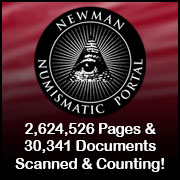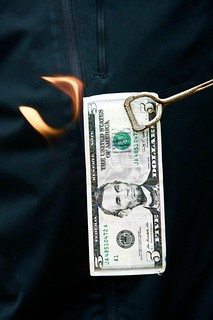
About UsThe Numismatic Bibliomania Society is a non-profit association devoted to the study and enjoyment of numismatic literature. For more information please see our web site at coinbooks.org SubscriptionsThose wishing to become new E-Sylum subscribers (or wishing to Unsubscribe) can go to the following web page link MembershipThere is a membership application available on the web site Membership Application To join, print the application and return it with your check to the address printed on the application. Print/Digital membership is $40 to addresses in the U.S., and $60 elsewhere. A digital-only membership is available for $25. For those without web access, write to: Charles Heck, Treasurer AsylumFor Asylum mailing address changes and other membership questions, contact Chuck at this email address: treasurer@coinbooks.org SubmissionsTo submit items for publication in The E-Sylum, write to the Editor at this address: whomren@gmail.com
BUY THE BOOK BEFORE THE COINSale Calendar
|
- WAYNE'S WORDS: THE E-SYLUM JULY 19, 2020
- KRAUSE PUBLICATIONS PHOTO ARCHIVE OFFERED
- NEW BOOK: BEHOLD YOUR KING
- NEW BOOK: RENNIKS AUSTRALIAN COIN & BANKNOTE
- NEW BOOK: COINAGE OF THE AKASSUMITE KINGS
- NEW PODCAST: ANA'S TWO BITS
- DR. H. DON ALLEN (1931-2020)
- NEWMAN PORTAL TRANSCRIBES 1809 DIE MINT LETTER
- VIDEO: RALPH ROSS INTERVIEW
- AUDIO: COINWEEK INTERVIEW WITH PETER TOMPA
- ANA CANCELS 2020 WORLD'S FAIR OF MONEY
- ANA MONEY TALKS LECTURE SERIES REGISTRATION
- ANA SUNDMAN LECTURE SERIES REGISTRATION
- 2021 NEW YORK INTERNATIONAL CONVENTION
- NOTES FROM E-SYLUM READERS: JULY 19, 2020
- STANDARD COIN CARD MYSTERY
- VOCABULARY TERM: EDGE
- WAITE B. LEWIS (1871-1936)
- HARVEY STACK'S NUMISMATIC FAMILY, PART 74
- SOFAER COLLECTION OF PALESTINE COINS AND TOKENS
- NUMISMATIC NUGGETS: JULY 19, 2020
- THE BYZANTINE ANONYMOUS FOLLIS
- JEFF BURKE'S NEW 1909 V.D.B. LINCOLN CENT
- 1910 EXPERIMENTAL FINISH DOUBLE EAGLE
- 1919 NEW YORK ASSAY OFFICE SILVER INGOT
- THE CASE OF THE BOGUS BURNING BILL
- LOUIS COLAVECCHIO, MASTER COUNTERFEITER
- OFFSET PRINTING ERRORS
- MORE ON THE 2020 TENINO WOODEN SCRIP
- CBS TENINO WOODEN MONEY SEGMENT
- OMAN'S NEW 50 RIAL BANKNOTE
- LOOSE CHANGE: JULY 19, 2020
- SHORTAGE LEADS BANKS TO PAY PREMIUM FOR CHANGE
Click here to access the complete archive
Click here to unsubscribe (scroll down)
To comment or submit articles, reply to whomren@gmail.com
Content presented in The E-Sylum is not necessarily researched or independently fact-checked, and views expressed do not necessarily represent those of the Numismatic Bibliomania Society.
WAYNE'S WORDS: THE E-SYLUM JULY 19, 2020
 New subscribers this week include:
Tom Murphy and
Paul Stolzer.
Welcome aboard! We now have 6,142 subscribers.
New subscribers this week include:
Tom Murphy and
Paul Stolzer.
Welcome aboard! We now have 6,142 subscribers.
Thank you for reading The E-Sylum. If you enjoy it, please send me the email addresses of friends you think may enjoy it as well and I'll send them a subscription. Contact me at whomren@gmail.com anytime regarding your subscription, or questions, comments or suggestions about our content.
This week we open with the sale of the Krause Publications photo archive, three new books, a new podcast, updates from the Newman Numismatic Portal, and more.
Other topics this week include online ANA presentations, the NYINC show, Palestine coins and tokens, the 1909 VDB cent, the 1919 New York Assay Office silver ingot, master counterfeiter Louis Colavecchio, offset printing errors, Oman's new banknote, and more on Tenino wooden money.
To learn more about the coins of Pontius Pilate, Australian coins and banknotes, research tools of the Newman Numismatic Portal and The Numismatist Digital Archives, author H. Don Allen, the Pennsylvania Railroad Heroic Service medal, the Bebee double-denomination note, coin and medal edges, an 1866 Shield Nickel pattern, a gold Carnegie Hero medal, and the case of the bogus burning bill, read on. Have a great week, everyone!
Wayne Homren
Editor, The E-Sylum
KRAUSE PUBLICATIONS PHOTO ARCHIVE OFFERED
George Cuhaj submitted this announcement of the upcoming sale of the Krause Publications photo archive. Thanks. This could be a great opportunity for the right researchers and collectors. -Editor
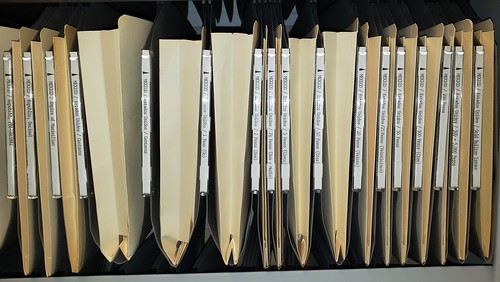
When the remaining staff of the old Krause Publication-F+W now AIM Media staff relocated to Stevens Point, Wis. (Some 30 miles away), the 700 E. State Street Building was purchased by the Iola Car Show. Slowly over the past two years cubicles and other equipment have been moved out and repurposed.
The Iola Historical Society and the Iola Car Show jointly share in proceeds of the sale of the abandoned portions of the numismatic library (and as you have read, the Newman Portal will benefit from Numismatic News going digital. The American Numismatic Society has benefited by accepting dealer Fixed price Lists which are not duplicated).
This left the Black & White photo archive for the 20th Century Standard Catalog coin books and the World Paper Money Standard Catalogs. There are 10x14 inch folders in the coin area organized by country political groups (just as in the catalog) or by issuing bank for the Paper Money section.
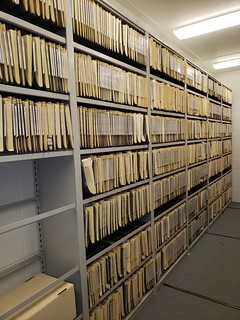
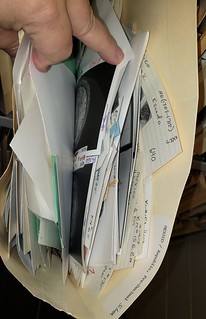
Those are now being offered on a as-is, first come-first served want list basis. Thick folders are $25, thin folders at $10 each. Plus postage in a box or uline envelopes. Email inquiries only to check on availability which will be confirmed. Not every photo found their way back into the country folder after the digitization process. Some folders may include negatives, veloxes, bluetones and other things involved in the production process. Payment arrangements will be outlined via email.
Library sales resume this week on eBay, including a special offering of 8x10 and 5x7 or so Assay Commission Meeting official photos from the 1960s and 1970s. Seller name: iola_historical_society .
George Cuhaj
george.cuhaj@yahoo.com
To read earlier E-Sylum articles, see:
KRAUSE PUBLICATIONS PARTIAL LIBRARY SALE
(https://www.coinbooks.org/v22/esylum_v22n18a04.html)
KRAUSE PUBLICATIONS LIBRARY BOOKS OFFERED
(https://www.coinbooks.org/v22/esylum_v22n21a05.html)
NEWMAN PORTAL DIGITIZES NUMISMATIC NEWS
(https://www.coinbooks.org/v23/esylum_v23n20a11.html)
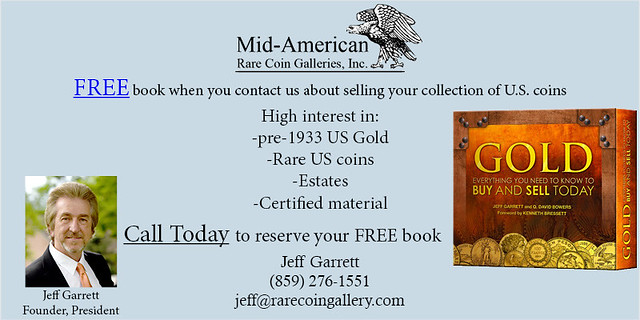
NEW BOOK: BEHOLD YOUR KING
E-Sylum subscriber Mark Bracken is a collector and dealer in ancient roman coins. He writes:
"A friend of mine, Bill Glassman, a pastor, has written a book confirming and proving the accuracy of the events in the life of Jesus."
Mark kindly submitted the following synopsis of the book. Thanks. -Editor
NEW BOOK: "Behold Your King" – confirming and proving the accuracy of the events in the life of Jesus.
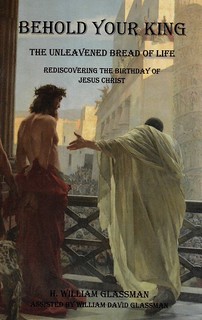 What impressed me about the book, from strictly a coin collector perspective, was the wealth of
interesting and groundbreaking information on the dating of the coins of Octavian (Augustus), Tiberius
and Pontius Pilate. After reading this material, I now believe there are mistakes in the commonly
accepted timeframes for coins issued by the aforementioned emperors, Pontius Pilate and his
predecessor (who issued coins that have been mis-attributed to another prefect). There is also a
chapter on the Shroud of Turin, specifically focusing on the coins (which have been identified as from
Pontius Pilate) that were placed on the eyes of Jesus before he was wrapped in the shroud. The
material is quite in depth and a very interesting read. I think many other collectors would agree.
What impressed me about the book, from strictly a coin collector perspective, was the wealth of
interesting and groundbreaking information on the dating of the coins of Octavian (Augustus), Tiberius
and Pontius Pilate. After reading this material, I now believe there are mistakes in the commonly
accepted timeframes for coins issued by the aforementioned emperors, Pontius Pilate and his
predecessor (who issued coins that have been mis-attributed to another prefect). There is also a
chapter on the Shroud of Turin, specifically focusing on the coins (which have been identified as from
Pontius Pilate) that were placed on the eyes of Jesus before he was wrapped in the shroud. The
material is quite in depth and a very interesting read. I think many other collectors would agree.
Why would Pontius Pilate wait until his third year of reign to have prutot minted of his own design when the prior prefects were quick to produce coins immediately upon obtaining power? Why would Pontius Pilate mint a coin honoring Julia after her death in A.D. 29, perhaps as many as three years after her falling out with Emperor Tiberius and his banning her from receiving special honors? Why would Pilate's predecessor produce several unique and ornate prutot and then switch to producing only the same stale design over his last years of reign? The answer to all these questions flies in the face of conventional wisdom.
All these questionable assumptions are the result of one wrong assumption. It seems that contemporary scholarship superimposes the modern customs of accession within a monarchy upon Roman history of the first century which did not follow such customs. We forget that Rome many times had arrangements of shared power. Chronologist and pastor, H. William Glassman makes the case a Senate decree followed by the passage of a Senate Law encoded the will of Augustus that his adopted son and heir Tiberius would share power with him from late A.D. 11 or early January A.D. 12.
Adjusting the years "of Tiberius" back to the point of his direct power over the provinces back to A.D. 12, as mandated by the law, rather than assuming his reign must be marked from the death of Augustus in A.D. 14, answers the earlier questions and is defended by quite an array of Roman History documented in Glassman's new book, "Behold Your King".
This groundbreaking work by Glassman explores the chronology of Jesus Christ. Requisite to the subject is a correct dating of the reign of Tiberius which then has direct bearing on the dating of some Roman coins. Glassman's careful description of the titles of the rulers of the Roman empire, his analysis and summary of the roots and inception of the co-regency of Tiberius and his proposals to answer questions of the dating of the prutot of A.D. 12-29 are worthy of the purchase of his book even if interest in the dating of the life of Jesus Christ escapes you. It was my privilege to edit Rev. Glassman's sections which pertain to Roman coins in his text and found the entire volume historically fascinating.
Behold Your King
Hardcover, 571 pages - 39.95 plus s/h and 2.40 state tax.
The book can be ordered directly from the author's web site, www.GethsemaneBooks.store or by calling 724.822.0620
To visit Mark Braken's Old Soldier Currency website, see:
https://oldsoldiercurrency.wixsite.com/oldsoldiercurrency

NEW BOOK: RENNIKS AUSTRALIAN COIN & BANKNOTE
The new 2020 edition of Renniks Australian Coin & Banknote guide is available. Here's information from the publisher's site. -Editor
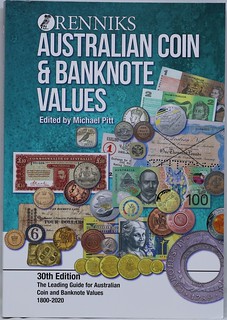 Renniks Australian Coin & Banknote Values 30th Ed.
Renniks Australian Coin & Banknote Values 30th Ed.
Hardcover
ISBN: 9780987105790
$49.95
This comprehensive guide to Australian Coin & Banknote Values contains over 3,850 images and countless thousands of valuations. This book is a must for all collectors, whether you are just beginning or an advanced collector. Latest information compiled using weighted averages where possible to ensure the accuracy of pricing.
Quality reproduction of photos makes it easy to identify items. Covered are copper, silver, gold, nickel and allow coins and notes used in Australia from 1800 to present. Subjects include Pre-Decimal and Decimal currency, as well as privately issued banknotes, war issues, and privately issued tokens. Also included are latest Royal Australian Mint, Perth Mint & Australia Post Numismatic Covers.
NOTE: There is a Hardcover and a Softcover version of this book. Hardcover is available on PreOrder
- General Information
- Coin Terms
- Grading Commonwealth coins
- Adjectival Grading System
- Hands on Grading
- Pictorial reference to major grades
- Proclamation Coins United Netherlands – Great Britain – Spain & Colonies – Brazil (Portugal) – East India Company
- Holey Dollars and Dumps 1813 NSW Fifteen Pence Dump & Five Shillings Holey Dollar
- Bullion Act 1852 1852 Adelaide Assay Office Ingots – Adelaide Pounds Port Phillip Gold Pattern Taylor Patterns
- Australian Gold Coinage 1855-1931 Half Sovereigns Sovereigns
- Major Commonwealth coin types Crowns and Commemorative issues Pre-Decimal Coins
- A History of Australian Pre-Decimal Coinage
- Pre-Decimal Pattern Pieces Kookaburra Penny & Halfpenny Square Patterns 1919-1921 – 1918-1920 Patterns – 1927 Patterns – 1937 Patterns
- Pre Decimal Proofs and Patterns
- PreDecimal Varieties
- Decimal Coins
- One cent – Two Cent – Five Cent – Ten Cent – Twenty Cent – Twenty Cent Non-Circulating Legal Tender – Fifty Cents (Circulation Coins) – Fifty Cents Non Circulating Legal Tender – One Dollar Circulating Coins – One Dollar Non Circulating Legal Tender – Two Dollars – Decimal Varieties – Decimal Patterns – Decimal Errors – Unofficial Patterns
- Royal Australian Mint NCLT
- Kangaroo at Sunset Silver Dollars – Silver Commemorative Dollars – Five Dollar Commemoratives – Ten Dollar Commemoratives – Various Commemoratives – Kangaroo Gold Proof Series – Fifty Dollars – One Hundred Dollars – One Hundred and Fifty Dollars – Two Hundred Dollars – Various Commemoratives – Masterpieces in Silver – Royal Australian Mint Sets – Commemorative & Circulating Currency Gold Proof Sets – Sydney 2000 Olympic Coin Program
- The Perth Mint NCLT
- Holey Dollar and Dump Series – Gold Nugget Proof Coins – Prospector Series – Kangaroo Gold Proofs – Kangaroo Platinum Bullion – Platinum Koala Proof Coins – Gold & Silver Koala Collector Coins – Palladium Emu Proof 1995-1997 – Silver Kookaburras – Lunar Series – Discover Australia – The Perth Mint Annual Edition Collector Coins – The Perth Mint Collector Coins – The Perth Mint Collector Coins – Young Collectors Annual Editions – Baby Annual Editions – Privy Marks and Host Coins
- Philatelic Numismatic Covers RAM & Australia Post PNCs – Perth Mint & Australia Post PNCs
- Tokens
- Private Issue 19th Century Coins
- Internment Camps
- Cocos Keeling Islands
- 1788 – 1829 Currency Notes
- Cheques, Promissory Notes & IOUs
- Bills of Exchange
- New South Wales Colonial Police Fund Notes
- Private Issue Banknotes
- Australia Postal Notes
- Superscribed Banknotes 1910-1914
- Government Issue Banknotes 1913-
- Pre-Decimal Banknotes 1913-1966
- Pre-Decimal Glossary – Banknote Condition Grading – Ten Shillings – One Pound – Five Pounds – Ten Pounds – Twenty Pounds – Fifty Pounds – One Hundred Pounds – One Thousand Pounds – Specimen & Trial Notes – Unissued BankNotes
- Decimal Banknotes
- Decimal Glossary – Banknote Signature Identification Chart: – Portrait identification guide-Decimal – One Dollar – Two Dollars – Five Dollars – Ten Dollars – Twenty Dollars – Fifty Dollars – One Hundred Dollars – Decimal Specimen Notes – Plate Identification Letters – Special Serial Numbers – Banknotes Designs – Decimal Banknote Collector Issues – Commemorative Folders – Special N.P.A Collections – Joint Issue Portfolios – Dated Annual Collector Folders – Annually Dated Sets – Last & First Portfolios-Two Notes – Miscellaneous Note Printing Australia Issues – Uncut Notes – Printing Faults
This publication is a simplifed guide showing current values, at date of publication General information on each issue is given but not specialised details such as variations & errors, including multiple modern packaging variations. Edited by Michael T Pitt
For more information, or to order, see:
Renniks Australian Coin & Banknote Values 30th Ed. Hardcover
(https://renniks.com/shop/renniks-australian-coin-banknote-values-30-hardcover/)
Andrew Crellin of Sterling & Currency published this review of the softcover version of the book. With permission, we're republishing it here. -Editor
Rennik's Australian Coin & Banknote Values Book 2020
Softcover 30th Edition
336 Pages, full colour
Includes stacks of new information for 2020, with a range of further enhancements.
There has been no shortage of controversy about the two main guides to Australian coin and banknote values in recent years - the Renniks guide was the first in several years to systematically address the adjustments in market values that took place since the Global Financial Crisis occurred in late 2007, more to the point the fallout that followed for the Australian numismatic market.
Flicking through the opening pages of the 30th edition, it's clear to see that this book has been designed and laid out by someone with an eye focused on good design and readability.
A well-structured document means that finding any coin or note in this book is a simple and straightforward process, which is essential if we're in a rush or are working through a large collection.
 The 30th edition maintains the colour throughout that has been included previously - lots of photographs means this really is an enjoyable publication to refer to and flick through.
The 30th edition maintains the colour throughout that has been included previously - lots of photographs means this really is an enjoyable publication to refer to and flick through.
A new section explaining the terms used in the descriptive grading standard has been included, as has a page giving a rough guide to the relationship between the adjectival ("raw") grades and the numerical grading standard that is used by independent grading companies such as PCGS.
Although the page that attempts to match up each adjectival grade with an equivalent numerical grade isn't perfect, if it even introduces the idea of numerical grading to a new collector starting out, that is well worth the cover price alone.
The way the decimal circulating and NCLT coins has been laid out is clear and well-structured - this section just makes sense.
That attention to detail is carried right throughout the section covering the banknotes - all of the important prefixes for our paper and polymer decimal notes have been identified, including those to look out for in the new NGB $5; $10; $20 and $50 notes.
All of the above changes are good and well, however as we've said before, no matter how well-designed these books are, the rubber hits the road with the market values they contain.
The editors have responsibly included a caveat very early in the book explaining that the figures in this guide are a guide only. No matter how well-intentioned any guide might be, actual market values can vary according to the exact circumstances of a buyer or a seller.
This means that any of us that have a keen interest in coins and notes are responsible for the decisions we make when we're buying and selling - we can't just rely on a printed guide like this.
The Renniks 30th edition to Australian Coin and Banknote Values gives an excellent overview of the Australian numismatic market - it is an excellent first step in working out what a particular coin and note is worth but it certainly shouldn't be the last step.
If you are a keen collector of any type of coin or note, you can use a guide like this to get started. Once you have the numbers here, you can then look at online sales; auction sales and what dealers are asking for their own inventory.
We'd all love to have a printed guide that we can rely on 100% when buying or selling but the reality is a strategy like that is fraught with danger - if the market moves (up or down) after a book has been published, we can come unstuck really easily.
In the meantime, the 30th edition of the Rennik's catalogue remains essential buying for any collector with an interest in Australian numismatics.
For more information, or to order from Andrew's Sterling & Currency, see:
Renniks Australian Coin & Banknote Values 30th Edition Book
(https://www.sterlingcurrency.com.au/renniks-australian-coin-banknote-values-30th-editi)
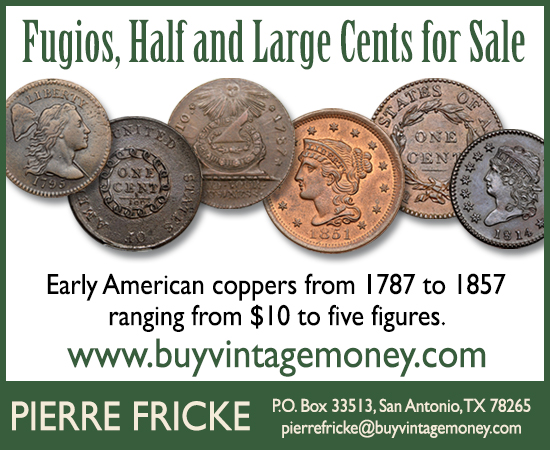
NEW BOOK: COINAGE OF THE AKASSUMITE KINGS
A new book on the coinage of the Akassumite kings has been published. Here's a Google translation of information from the German publisher's web site. I was alerted to this by a CoinsWeekly review article by Ursula Kampmann - see the link below. -Editor
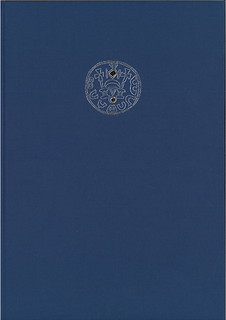 History of the coinage of the Akassumite kings in late antiquity
W. Hahn and R. Keck
History of the coinage of the Akassumite kings in late antiquity
W. Hahn and R. Keck
Vienna 2020
ISBN 978-3-9504268-0-9
Format 21.5 x 30.5 cm
312 pages
20 plates
€ 58.00
As a result of decades of preparatory work, the two authors present a comprehensive coin history of the ancient Ethiopian empire of Aksum, which is based on an intensive collection of materials from all relevant sources. It is only a comparatively small area in the late antique coin landscape, so to speak, a monetary island on the southern edge of the world known at that time, but which was on a main trade route to India. The coins were not only used for royal representation. Their temporal extension runs parallel to the Roman coins of the emperors Diocletianus to Heraclius, to which there are some cross-connections.
The material basis is a piece corpus of 1466 gold and 2176 silver coins with a stamp-critical and quantity-statistical evaluation; account will also be taken of the less suitable copper coins, which are often poorly preserved but have been preserved in large numbers. Metrological and metallurgical analyzes expand the evidence. The typological development is expanded in a comprehensive comment section, which brings some new dating approaches; the 95 main types, descriptive catalog is embedded in it. These are divided into 20 named, mostly otherwise unknown, kings.
The catalog takes into account additional character and legend variants and is accompanied by idealized line drawings in the (relatively small) original size, while 20 color plates in 1, 5x magnification also reflect the stylistic spread. Special appendices provide statistical overviews, aspects of counterfeiting problems and information on money transactions, ie on the spread of finds of the Aksumite coins in general, as well as of foreign coins in the Ethiopian area.
For more information, or to order, see:
Veröffentlichungen des Instituts (VIN) vin21
(https://numismatik.univie.ac.at/forschung/publikationen/veroeffentlichungen-des-instituts-vin/vin21/)
To read the complete CoinsWeekly article, see:
In the Aksumite Empire
(https://coinsweekly.com/in-the-aksumite-empire/)
NEW PODCAST: ANA'S TWO BITS
Two episodes of the American Numismatic Association's new podcast Two Bits are available for listening. -Editor
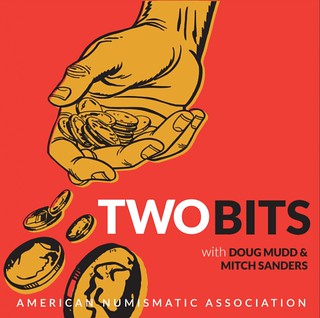 Welcome to Two Bits, the American Numismatic Association's podcast about the wonderful world of coins and paper currency. Enjoy wide-ranging discussions about numismatics, in a fun and engaging way.
Welcome to Two Bits, the American Numismatic Association's podcast about the wonderful world of coins and paper currency. Enjoy wide-ranging discussions about numismatics, in a fun and engaging way.
Host Doug Mudd has collected since the age of 10 and is currently interested in ancients, modern paper money, WWI and pre-19th century medals and coins. He was Collection Manager for the Smithsonian Institution's National Numismatic Collection from 1991 to 2004 and has been the curator of the ANA's Money Museum since 2004. Author of numerous numismatic lectures, exhibits and publications, he writes a regular column for The Numismatist and has been an ANA Summer Seminar instructor since 2002. He is also the author of the NLG award winning book All the Money in the World printed in 2006 by Harper Collins as part of Smithsonian books.
Host Mitch Sanders is the author of the column "Getting Started" in the ANA's Numismatist magazine. A lifelong collector, his numismatic interests range from popular collectibles like Mercury dimes and Franklin halves to more esoteric items including Canadian Chartered banknotes and Swedish plate money. From 2003 to 2010, he served as a representative of the general public on the Citizens Coinage Advisory Committee, and was committee chair from 2005 to 2009.
Episode 1 Summary
In the inaugural episode of Two Bits, hosts Doug Mudd and Mitch Sanders discuss collecting during the isolation of the COVID 19 crisis. They explore the virtues of virtual meetings, online museum exhibits, and numisma-tourism, along with other online resources and research tools. Find out how to get your numismatic fix, despite staying at home!
Episode 2 Summary
In this episode of Two Bits, Doug and Mitch discuss some of the many excellent options available for numismatic reading. They introduce the extensive online research tools of the Newman Numismatic Portal and The Numismatist Digital Archives, and they recommend some recent printed books that are likely to interest collectors. Find out about the latest and greatest in the world of numismatic literature!
The podcast web page helpfully includes links to multiple referenced sources of additional information for each episode. Nice! -Editor
For more information, or to listen, see:
https://www.money.org/podcast
THE BOOK BAZARRE
DR. H. DON ALLEN (1931-2020)
Canadian numismatic researcher and author Dr. H. Don Allen has passed. His family kindly provided this overview of his life and works. Thank you - we're sorry to learn this news. Thanks to Geoff Bell, Allen's daughter Laura Ashton and several others for their contributions. -Editor
Dr. H. Don Allen, Prolific Contributor to Numismatics for 7 decades, dies at 89
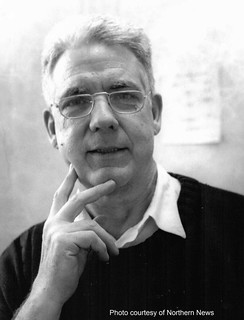 Dr. Harold Don Allen (July 2, 1931 – July 11, 2020) who taught generations of math
students and future teachers, instilled a sense of wonder in bright young people
about the beauty of numbers and cryptograms and brought a story-teller's passion to
numismatic history and collecting, from banknotes to milk tokens, passed away
quietly on in Brossard, Quebec, family at his side.
Dr. Harold Don Allen (July 2, 1931 – July 11, 2020) who taught generations of math
students and future teachers, instilled a sense of wonder in bright young people
about the beauty of numbers and cryptograms and brought a story-teller's passion to
numismatic history and collecting, from banknotes to milk tokens, passed away
quietly on in Brossard, Quebec, family at his side.
Don Allen was born and raised in Montreal, Canada, He earned his BSc in Mathematics and Physics with Distinction in 1952 from McGill University and Masters degrees from the University of Santa Clara in 1966 and Rutgers University in 1968. His doctorate in mathematics education, a source of enormous pride for him throughout his life, was conferred on him by Rutgers in 1977.
He taught professionally for 51 years, in Montreal, Chibougamau and Arvida in Quebec, at the Nova Scotia Teachers College in Truro, Nova Scotia from 1969 to 1987 and in the Canadian Arctic at the Nunavut Teacher Education Program in the mid-90s.
Allen acquired an early numismatic fascination with world paper money, began writing published articles in the late 1950s and was an active member of numismatic societies in Canada, the US and abroad for more than 70 years. He was well ahead of his time in talking about new collecting areas such as Canadian milk tokens, rationing and other "Cinderella" means of exchange, including his widely-cited 2006 article in The Numismatist about the origins of Canadian Tire scrip "money".
He was a Lifetime or Honorary member of the American Numismatic Association, Royal Canadian Numismatic Association, Canadian Paper Money Society, International Banknote Society and Society of Paper Money Collectors, a fellow of the Royal Numismatic Society, a past president of the Montreal Coin Club and a member of many other clubs worldwide.
Recipient of the Ferguson gold medal, the highest award in Canadian numismatics, Allen was a prolific writer of hundreds of articles for the world's leading numismatic journals and newspapers, including The Numismatist, Coin World, the Canadian Numismatic Journal, the International Banknote Society Journal and the Farebox.
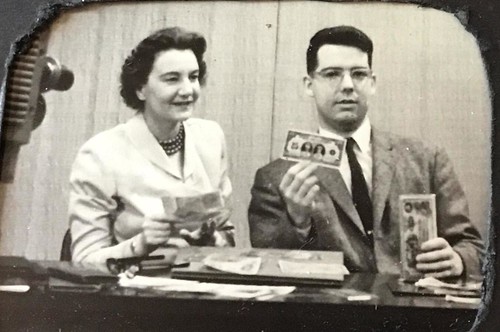
H. Don Allen On Television in 1959
Additionally, was an innovator in bringing the hobby to a wider audience though the use of television and radio. He and the Truro Coin Club (today known as the Central Nova Scotia Coin Club) had a regular TV program on Eastern Cablevision that was broadcast throughout central Nova Scotia. This initiative was recognised by the ANA in the 1970 National Coin Week competition, and reported by the New York Times, with Allen's entry being the only award granted that year outside the United States.
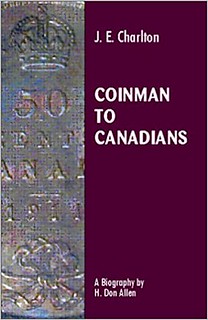 In 2001, Allen wrote the authorised biography of a renowned Canadian numismatist, Jim
Charlton. J.E. Charlton: Coinman to Canadians was prepared from personal
correspondence and conversations between the author and "Mr. Coin".
In 2001, Allen wrote the authorised biography of a renowned Canadian numismatist, Jim
Charlton. J.E. Charlton: Coinman to Canadians was prepared from personal
correspondence and conversations between the author and "Mr. Coin".
Never having learned to drive a car, Allen travelled by bus and train, visiting his children as they moved away from home, across Canada and to Europe, the Middle East and Asia. He proudly claimed to have visited all 48 contiguous American states plus Hawaii, attending, speaking, exhibiting and judging at ANA and other numismatic and educational conventions and gatherings.
Don and Frances Allen were married for nearly 63 years. Fran passed on in April, 2018.

Don and team introducing the metric system to Nova Scotia (with daughter Laura) c. 1973
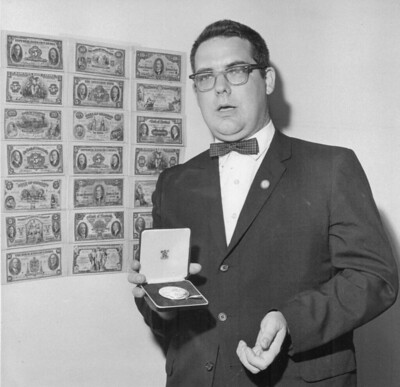 When the metric system was being introduced in Canada during the early 1970s, Allen co-authored a series of related textbooks and used his background in broadcasting for public education of the merits of the metric system. Fran and their children had little choice but to adopt the new system when Fahrenheit and yardsticks in their home were promptly and permanently replaced with Celsius and metre sticks.
When the metric system was being introduced in Canada during the early 1970s, Allen co-authored a series of related textbooks and used his background in broadcasting for public education of the merits of the metric system. Fran and their children had little choice but to adopt the new system when Fahrenheit and yardsticks in their home were promptly and permanently replaced with Celsius and metre sticks.
Dr. H. Don Allen will be laid to rest in his crimson doctoral robes at a private ceremony at Mount Royal Cemetery at the Allen family monument. He is survived by his four children Nigel, Laura (Ashton), Elizabeth (Seamone) and Rosalie (Jarvis) and their families. Friends and associates are invited to view his memorial site here and leave messages or numismatic memories or photos for the family.
To read the complete obituary, or leave condolences and memories in the Guestbook, see:
HAROLD DON ALLEN
July 2, 1931 - July 11, 2020
(https://mountroyalcem.permavita.com/site/HaroldDonAllen.html)
Bob Graham writes:
"Don was a regular columnist for Canadian Coin News., I think in the 1990s and 2000s."
Canadian Numismatic Bibliography editor Darryl Atchison writes:
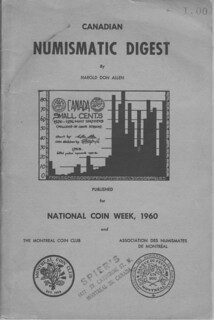 "Don was also a Fellow of the Canadian Numismatic Research Society and was the recipient of the J.D. Ferguson award in 2003.
"Don was also a Fellow of the Canadian Numismatic Research Society and was the recipient of the J.D. Ferguson award in 2003.
"I met Don at many conventions over the years where he was a guest speaker and he kindly provided numerous illustrations for the CNB.
"Here is a publication produced by Don Allen to promote National Coin Week in 1960. The publication contains 40 articles that were mostly published originally in various local newspapers. The articles cover a broad spectrum and are aimed at both the general public as well as established collectors. This is very much in line with Don's philosophy of promoting the hobby in every way possible."
Ron Greene writes:
"He was a Fellow of the Canadian Numismatic Research Society from 1966 to 1987. He was not a regular attendee at the Royal Canadian Numismatic Association conventions where we held our CNRS meetings. The year that he was selected to receive the Ferguson Medal his daughter was getting married in the U.K. the same day and he chose to go to the wedding so we sent the medal to the Maritimes with Geoff Bell to be presented at the suitable time there."
Bad timing, good choice! -Editor
John Regitko writes:
"I remember the first time I met Don. I was the President of the Toronto Coin Club back in the late 1960s, chairing the meeting, when someone walked into the room just as I was calling the meeting to order. I didn't know who the gentlemen was. He must have been 6'5". I asked guests to introduce themselves. The tall man turned out to be Harold Don Allen. He happened to be in Toronto and thought he would drop in.
"I wound up with a quantity of the book on Jim Charlton from the publisher, William "Bill" Cross, who bought Charlton Press from Jim, and sold probably a hundred of them at coin shows and coin club meetings. The book was well received since not many collectors knew Jim's pre-dealer history.
"The new owner/publisher uncovered a small quantity of the book and still has a few available. The best bet is to contact Colonial Acres Coins in Kitchener, Ontario through their website for pricing and availability."
Royal Canadian Numismatic Association Executive Secretary Paul Johnson writes:
"He was Chairman of Coin Week Canada in the late 1970's. I was on his national committee so I had numerous contact with him by telephone and letter writing. I did meet him at various Royal Canadian Numismatic Association conventions back then.... however his attendance at these events became infrequent after the mid 1980's."
For further reading, see:
H. Don Allen references on the Newman Numismatic Portal
(https://nnp.wustl.edu/library/searchwithterms?searchterm=H.%20Don%20Allen)
Canadian Tire money
(https://en.wikipedia.org/wiki/Canadian_Tire_money)
Winners of Coin Week Announced
(https://www.nytimes.com/1970/07/26/archives/coins-winners-of-coin-week-announced.html)

NEWMAN PORTAL TRANSCRIBES 1809 DIE MINT LETTER
The latest addition to the Newman Numismatic Portal is a transcription of a U.S. Mint letter regarding the recovery of an 1809 coin die. Project Coordinator Len Augsburger provided the following report. -Editor
A U.S. Mint Die From 1809
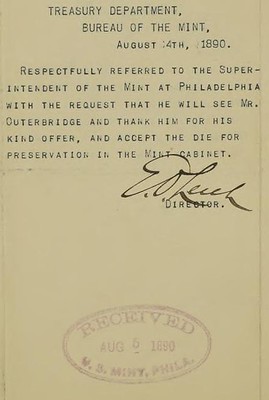 While the National Archives closure has disrupted our scanning activity of U.S. Mint archival materials, primarily correspondence, our focus shifts to transcribing portions of our previously scanned material. Uncovered this week was an 1890 letter discussing a U.S. Mint die from 1809, which somehow escaped the Mint and was returned by A. E. Outerbridge, Jr.
While the National Archives closure has disrupted our scanning activity of U.S. Mint archival materials, primarily correspondence, our focus shifts to transcribing portions of our previously scanned material. Uncovered this week was an 1890 letter discussing a U.S. Mint die from 1809, which somehow escaped the Mint and was returned by A. E. Outerbridge, Jr.
A quick Google search indicates that Outerbridge was of a scientific bent and employed as Vice President of the Thomas Devlin Manufacturing Company in Philadelphia, in the field of iron works and tool manufacturing. The letter related that the die was being used as a paperweight by the company stenographer and drew the attention of Outerbridge as a "curiosity." Presumably the company acquired the die as scrap metal at some point.
A number of dies from the early U.S. Mint are known, with the largest group at the American Numismatic Society, these are documented in Secret History of the First U.S. Mint, pp. 72-80. This 1809 die may still exist in the National Numismatic Collection, or within the U.S. Mint itself. Newman Portal acknowledges Roger Burdette and Nicole Fry for developing transcriptions of the National Archives material.
Link to correspondence related to 1890 die:
https://nnp.wustl.edu/library/book/586056
Link to transcribed letters for 1890 on Newman Portal:
https://nnp.wustl.edu/library/archivedetail/515202?Year=1890&take=50
VIDEO: RALPH ROSS INTERVIEW
These are selections from the David Lisot Video Library that feature news and personalities from the world of coin collecting. David has been attending coin conventions since 1972 and began videotaping in 1985. The Newman Numismatic Portal now lists all David's videos on their website at:
https://nnp.wustl.edu/library/multimediadetail/522852
Here's one on Vice President Ralph Ross. -Editor
Ralph Ross Combines Coin Collecting and Academics for Young People.
Ralph Ross, Ph.D., Vice President, American Numismatic Association,
Interviewer, David Lisot, CoinTelevision.com.
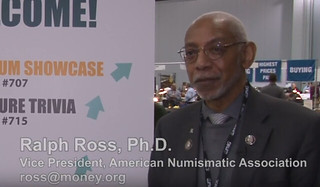 Dr. Ross has a unique view of numismatics. He is currently serves vice-president of the American Numismatic Association. He had a Ph.D in education and as an educator and academic he sees coin collecting as not just a hobby. He sees it as a life style. Hear about his vision in this candid interview on the floor of the ANA National Money Show in Atlanta in August 2019.
Dr. Ross has a unique view of numismatics. He is currently serves vice-president of the American Numismatic Association. He had a Ph.D in education and as an educator and academic he sees coin collecting as not just a hobby. He sees it as a life style. Hear about his vision in this candid interview on the floor of the ANA National Money Show in Atlanta in August 2019.
An excerpt of the video is available for viewing on the Coin Television YouTube Channel at:
https://youtu.be/6jDhUnKRe8Y
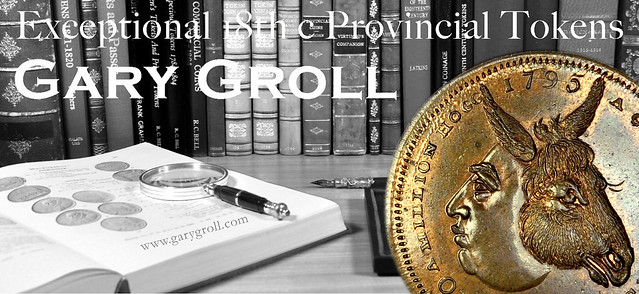
AUDIO: COINWEEK INTERVIEW WITH PETER TOMPA
Potential new restrictions on the import of ancient coins are a huge concern today. In their latest podcast, CoinWeek interviews Peter Tompa about the issue. -Editor
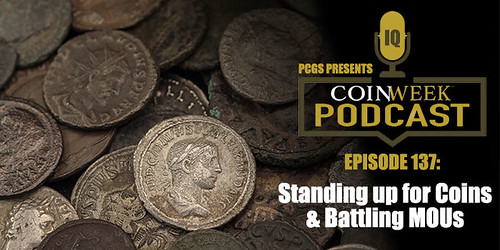
Today on the CoinWeek Podcast we talk to Peter Tompa about the pending renewal of a Memorandum of Understanding (MoU) between the United States and the Republic of Italy. This MoU renewal may pose a threat to the coin collecting hobby in the United States and abroad.
MoUs, or Memoranda of Understanding, are agreements between governments that set guidelines for policies that are in the mutual interest. In the case of the recent MoU negotiations between the United States and Italy, restrictions relating to the export of certain Roman coins are under consideration.
Peter Tompa, an attorney and a registered lobbyist for the PNG and the IAPN, has been fighting the good fight to protect our hobby from these burdensome government regulations.
To read the complete article, see:
CoinWeek Podcast #137: Standing Up for Coins and Battling MoUs (With Peter Tompa)
(https://coinweek.com/ancient-coins/coinweek-podcast-137-standing-up-for-coins-and-battling-mous-with-peter-tompa/)
To read the earlier E-Sylum articles, see:
HELP SAVE ROMAN IMPERIAL COIN COLLECTING
(https://www.coinbooks.org/v23/esylum_v23n27a13.html)
COINS 'TOO IMPORTANT FOR THE PUBLIC TO HOLD'
(https://www.coinbooks.org/v23/esylum_v23n28a11.html)

ANA CANCELS 2020 WORLD'S FAIR OF MONEY
Unable to secure a suitable alternative venue, the ANA has officially cancelled the 2020 World's Fair of Money. -Editor
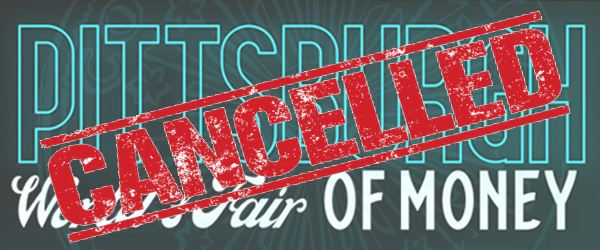
ANA Board of Governors Commits to Pittsburgh for 2023 Show
The American Numismatic Association (ANA) Board of Governors voted on July 14 to officially cancel the 2020 World's Fair of Money®. The show was originally scheduled for August 4-8 in Pittsburgh, Pennsylvania; however, COVID-19 restrictions made continuing with the Pittsburgh event unfeasible, and the Board voted in mid-June to postpone the event while it considered alternate sites and dates. The July 14 vote effectively terminated any further research and planning for a replacement location for the 2020 show given the current coronavirus situation and the inability of the ANA to assure the safety of its members, dealers, staff and visitors.
The Board did commit to Pittsburgh as the site for the 2023 World's Fair of Money, recognizing the outstanding planning developed by the local host committee in preparing for the cancelled 2020 show, provided that comparative contractual arrangements can be made.
"Although we share the disappointment of collectors and dealers in cancelling the 2020 World's Fair of Money, it is the right decision given the wide range of uncertainties we currently face," says ANA President Steve Ellsworth. "We're appreciative of our partners, specifically official convention auctioneers Heritage Auctions and Stack's Bowers Galleries, for their understanding and support of this decision. In the meantime, this action enables the ANA staff to refocus its maximum efforts and efficiencies towards the organization's emergence and growth out of the pandemic crisis."
The American Numismatic Association's convention has only been cancelled twice before: in 1918 during the flu pandemic and again in 1945 because of World War II.
Although the show itself will not be held, collectors can still attend convention events online, including Money Talks and the Sundman Lecture Series. These presentations and lectures are free to attend but registration is required. ANA awards presentations that were scheduled at the 2020 World's Fair of Money also will be held virtually.
"We look forward to welcoming collectors to the March 11-13 National Money Show® in Phoenix and to the 2021 World's Fair of Money in Rosemont (Chicago), Illinois, August 10-14," says Ellsworth.
To read the complete press release, see:
2020 World's Fair of Money Officially Cancelled
(https://www.money.org/uploads/Cancellation%20Notice%202020.pdf)
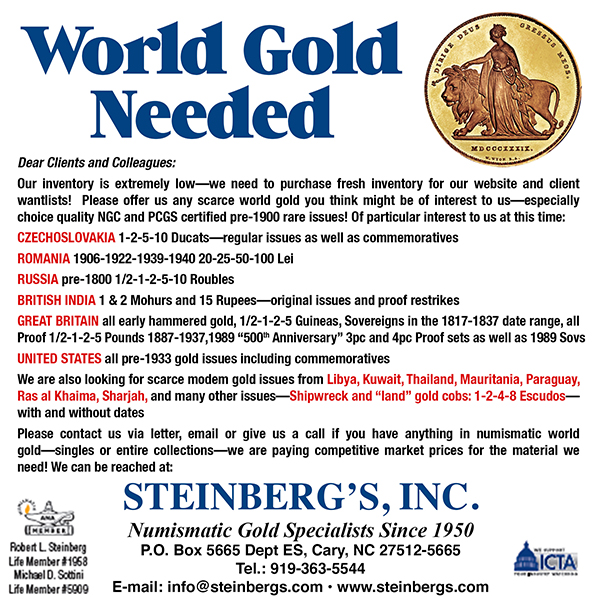
ANA MONEY TALKS LECTURE SERIES REGISTRATION
Registration is open for the American Numismatic Association's Money Talks series. Ordinarily presented in person at the annual World's Fair of Money convention, the ANA will be making these available as online events. -Editor

August 2020
Learn from fellow numismatists, collectors and ANA members about their passions and latest research.
These one-hour presentations are FREE and open to the public! Explore lectures and register below:
The Ultimate Large Cent Date & Type Set
This presentation will offer the ultimate eye-candy journey through the large cent series, with surprise tidbits and related revelations that will entertain you and leave you wanting more.
Instructor: John Wright
When: August 3, 2020 | 1:00 PM MDT
Pay Warrants of the Texian Navy
We all remember the Alamo, but the navy was the savior of the Republic of Texas. Printed on orders from Commodore Edwin Moore, the pay warrants of the Texian Navy were repudiated by President Sam Houston. They may hold a clue to the mutiny aboard the San Antonio.
Instructor: Michael E. Marotta
When: August 4, 2020 | 12:00 PM MDT
Strategies to Dispose of Your Collection
Many collectors do not know what to do with their collection before they cross the "Great Misty Veil of Life." Often, their spouse and/or children are not familiar with numismatics nor the least bit interested in the hobby. Should a collector die without a specific strategy in place, the family is left with a big mess. Should you sell your collection before passing, or how can you help your relatives liquidate your collection upon your demise?
Instructor: Rod Gillis
When: August 7, 2020 | 12:00 PM MDT
An Introduction to Collecting Colonial Paper Money—"Tis Death to Counterfeit"
The presentation will discuss the need for paper money in colonial America, their issue by the colonies and the Continental Congress and contemporary counterfeiting. Reference books and methods of collecting will be presented. Examples from several colonies and the Continental Congress will be shown and discussed.
Instructor: Raymond Williams
When: August 10, 2020 | 12:00 PM MDT
Siege Stories: Tales of Courage & Defiance
Siege warfare has generated a fascinating area of numismatics. With it comes its share of heroes, heroines and villains. Dr. Korchnak will use coins, medals and tokens to bring these characters to life with excerpts from his soon-to-be-published work on siege coins, OBSIDIONAL COINS OF THE WORLD, 1453-1902.
Instructor: Lawrence C. Korchnak, Ph.D.
When: August 11, 2020 | 12:00 PM MDT
Origins of Money
It may be hard to imagine a world without coinage, but for most of human existence, trade within communities and regions was handled without coins or paper money. Many types of objects have been used as money, from carved stones to the feathers of rare birds. The only requirements were that the objects be reasonably available and durable. Learn about early forms of money and how it changed and eventually led to the development of coinage during the 1st millennium B.C.
Instructor: Doug Mudd
When: August 12, 2020 | 12:00 PM MDT
Rushing Through Panama: A Story of Numismatics on the Journey to the American Gold Rush
Using primary sources and other relevant information, this presentation focuses on the intricate nature of numismatics during the American Gold Rush—a watershed moment in U.S. history, often overlooked by what came after miners arrived in 1850s California. The coins and currencies used during this westward journey will be discussed.
Instructors: Jack E. Topping
When: August 13, 2020 | 5:30 PM MDT
Before the Coinage Act of 1857: How Americans Spent their Foreign Money
This talk focuses on the way foreign money circulated on a day-to-day basis. Whether converting money from one currency to another, pricing goods in "shillings/pence" into the 19th century, or constantly worrying about counterfeits, Americans depended on a common "toolbox" of methods to navigate this complex system.
Instructor: Jesse Kraft
When: August 17, 2020 | 2:30 PM MDT
Artistry and Technology—How the Large Cent Dies Were Made
This talk uses image analysis of early U.S. copper coins to show how the engravers produced the large-cent dies. The U.S. Mint was an entirely new undertaking in 1792. Nobody who worked there during that time had any meaningful experience with coinage, and the technology they had was at least a century out of date in Europe. Nevertheless, by the spring of 1793, Chief Coiner Henry Voigt was creating hubs to produce the dies for circulating coinage. Robert Scot, first chief engraver, used hubs by Voigt and himself to produce new designs in the late 1700s. Scot's techniques persisted through the second chief engravership of William Kneass. Both Voigt and Scot produced highly artistic designs, despite the fact that neither had any die-sinking experience prior to working at the Mint. In the early 1830s, Franklin Peale spent two years in Europe learning about the technologies in use there. The coins that Christian Gobrecht, third chief engraver, produced show how he applied several of these new methods to the creation of his dies. The coins tell us a great deal about how they were made; all we must do is listen to them.
Instructor: Bill Eckberg
When: August 19, 2020 | 12:00 PM MDT
30 Minutes at the First Philadelphia Mint
The Coinage Act of 1792 established the Mint at Philadelphia. The facility remained in operation through 1832, and a new, second mint building was occupied in 1833. The 40-year history of the first mint will be explored in a 30-minute presentation, discussing important people, coinage issues, and related topics.
Instructors: Mark Borckardt
When: August 21, 2020 | 2:00 PM MDT
George Clapp, Charles Clapp & Robert Book—Pittsburgh's Numismatic Copper Trio
The personal and numismatic lives of these three men are one of the most interesting stories that can be told. Unfortunately, much incorrect information has been published. This PowerPoint presentation will set the record straight by providing evidence from the archives of the ANS, the Carnegie Museum and the Archives of the Western Pennsylvania Numismatic Society.
Instructors: Charles F. Heck & Wayne Homren
When: August 24, 2020 | 10:00 AM MDT
Symbols of the Sun God on Coins of the Eccentric Emperor Elagabalus
The Roman emperor Marcus Aurelius Antoninus, known to history as Elagabalus, served as chief priest of the Syrian sun god El-Gabal. This talk explores the significant proportion of Elagabalus' coins that reference the sun god through symbols such as stars, stones, and the emperor's priestly accouterments.
Instructors: Michael A. Kodysz
When: August 26, 2020 | 2:00 PM MDT
For more information, or to register, see:
Money Talks Lecture Series Webinars
(https://info.money.org/elearning/moneytalks)

ANA SUNDMAN LECTURE SERIES REGISTRATION
And don't forget the excellent Sundman Lecture Series, which is also going online this year. -Editor
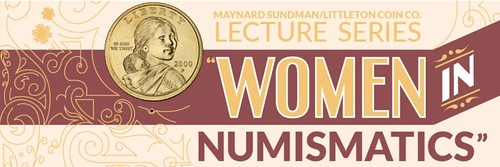
August 2020
The theme for this year's Sundman Lecture Series is Women in Numismatics.
These one-hour presentations are FREE and open to the public! Explore lectures and register below:
Visual Strategies of Suffrage, the 19th Amendment & American Coin Design
The visual language of women's suffrage is rendered on contemporary U.S. coins, including Adolph A. Weinman's Winged Liberty Head (aka "Mercury") dime and Walking Liberty half dollar, and on Hermon MacNeil's Standing Liberty quarter dollar, all first issued in 1916. These coins draw on a rich, visual vocabulary used to promote voting rights for women. For example, Weinman's "Wings of Thought" on his famed dime also is used in multiple contemporary suffragist posters, including Egbert C. Jacobson's "Equality Is the Sacred Law of Humanity," and Liberty is used on Henry Mayer's image "The Awakening," published in the 1915 satirical magazine Puck. This presentation will detail the role allegory played in the visual strategies of suffrage—on view will be examples of classically-inspired symbolism on American coinage in the early 20th century through the lens of the women's suffrage movement.
Instructor: Steve Roach
When: August 5, 2020 | 12:00 PM MDT
The Influence of Anna W. Williams in Numismatics
This presentation will explore one iconic woman's role in the advancement of circulating coinage in the United States and the lasting impact she has had on numismatics. Schoolteacher Anna Willess Williams' rise to fame began in 1876 when U.S. Mint engraver George T. Morgan selected her as a model for the portrait on a new coin design. Christened the "Goddess of Liberty" by The Numismatist magazine in 1896, Williams was thrown into the spotlight and became an integral part of numismatics—her portrait became the world-famous "Lady Liberty" on the obverse of the Morgan Dollar, which was minted from 1878 to 1904 and again in 1921. This presentation will discuss, in conjunction with Williams' biography, the state of the economy and American society leading up to the design and creation of the Morgan dollar and the coins subsequent impact on numismatics.
Instructor: Jack E. Topping
When: August 6, 2020 | 5:30 PM MDT
The Leading Ladies of Rome
As Rome transitioned from a republic to an empire, a significant change took place in its coinage—it began to feature portraits of women. Marc Antony was the first Roman leader to place an image of his leading lady, Octavia, on a coin. She was followed shortly thereafter by the appearance of Cleopatra VII, and in the ensuing centuries, it became commonplace to adorn coinage with portraits of Rome's leading ladies. This presentation will discuss the evolution of such portraits, from depictions of largely adjunct figures in the 1st century to illustrations of distinction in the 2nd century and beyond. Also discussed will be the variety of portrait styles—from starkly realistic to rather emblematic, and back again—from the era of the Byzantine Empire and the Renaissance to more recent coinage.
Instructor: Dave Michaels
When: August 14, 2020 | 1:00 PM MDT
Politics, Power, & Positioning: Byzantine Empresses on Coinage
The segue of the Western Roman Empire to the Eastern Roman Empire (aka Byzantine Empire) was gradual—numismatists pinpoint A.D. 491 as the start of the Byzantine Empire because the new emperor, Anastasius I, reorganized the money system at that time. The Western Romans were pagans and used imagery of gods and goddesses on their money, while the Byzantines were Christian and employed crosses and orbs. However, the most radical change—for the purposes of this discussion—was the addition of women rulers on the coinage struck during the reign of Justin II (A.D. 565-78). The title of "empress" did not come with the right to produce coins, so there is significance in their likenesses appearing on the money. Using contemporary sources, this talk will explore how the empresses' and other regents' relationships with the emperors and other powers helped them to achieve this recognition.
Instructor: Prue Fitts
When: August 18, 2020 | 11:00 AM MDT
Numismatic Contributions of Trailblazing Treasury Department Women, 1795 to Date
There is undeniable, documented proof in the Department of the Treasury's records that beginning in the late 18th century, women were employed in various divisions of the department and played a significant role not only in American history but in numismatic history as well. Their contributions to the field began in April 1795 when Henry Voigt of the Philadelphia Mint hired Sarah Waldrake and Rachel Summers—the mint's first female employees. Their jobs? Coin adjusters! Their numismatic contributions? View the presentation to find out! Also highlighted will be the little-known and overlooked exploits and hobby contributions of other Treasury women—Augusta Owen, Jeannie Douglas, Annie H. Martin, Marion Bannister, Rae Biester, Eva Adams, and Bette B. Anderson—over the past 228 years.
Instructors: Walt Ostromecki
When: August 20, 2020 | 11:00 AM MDT
Women in Military Numismatics
Military numismatics is the study of coins, paper money, tokens, and the like that were issued or used by military forces. Usually, the use of the items is limited to military personnel or is a result of a military operation. This presentation will be centered primarily on the two world wars. Topics of discussion include trench art coins, "short snorters," World War II medals awarded exclusively to women, mothers' crosses, World War II decorations featuring portraits of women, American Red Cross chits, and war bonds purchased by women in Japanese-American internment camps. This presentation, featuring many numismatic and historic images, is the culmination of 50 years of research published and unpublished sources.
Instructor: Fred Schwan
When: August 27, 2020 | 12:00 PM MDT
For more information, or to register, see:
Sundman Lecture Series Webinars
(https://info.money.org/elearning/sundman)
THE BOOK BAZARRE
2021 NEW YORK INTERNATIONAL CONVENTION
While the August ANA show is off, the January 2021 New York International is still being planned. Here's the press release. -Editor
 The 49th Annual New York International Numismatic Convention will be held at
the Grand Hyatt New York, located at 109 East 42nd Street between Lexington and Park Avenues from January 8 through January 17, 2021.
The 49th Annual New York International Numismatic Convention will be held at
the Grand Hyatt New York, located at 109 East 42nd Street between Lexington and Park Avenues from January 8 through January 17, 2021.
Kevin Foley, Bourse Chairman for the world and ancient specialty event, said of the convention's auction offerings. "We will once again have eight full days of auctions, with all of our eight companies from 2020 returning once again. Heritage will open their lot viewing at the Hyatt on Friday, January 8 and hold sessions Sunday and Monday, January 10 and 11. Classical Numismatic Group will open its viewing on Sunday, January 10 for sessions on Tuesday and Wednesday, January 12 and 13. The New York Sale, a four company consortium consisting of M&M Numismatics, Ira and Larry Goldberg, Sovereign Rarities and Dmitry Markov, will also open its lot viewing on Sunday, January 10 for sessions to be held Tuesday through Thursday, January 12-13-14."
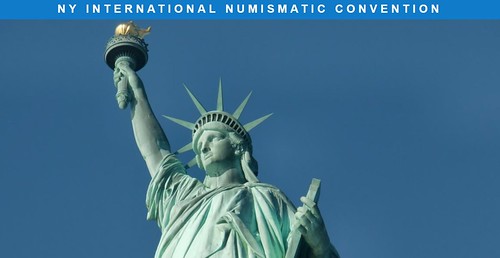
Foley continued, "Stack's-Bowers-Ponterio will hold auction sessions Friday and Saturday, January 15 and 16, with their lot viewing getting underway on Wednesday, January 13. Spink USA will start its lot viewing on Wednesday, January 13 for sessions to be held Friday, January 15 and Sunday, January 17. London's Baldwin's of St. James will hold the final NYINC auction session on Sunday, January 17. Their lot viewing will start on Thursday, January 14" Contact information to consign to any of the official NYINC auction firms can be found at www.nyinc.info.
The NYINC bourse itself will open for the 12noon-7PM Early Bird Day on Thursday, January 14. There is a $125 registration fee to participate in the Early Bird bourse sessions, which also accords bourse admission during the regular public admission periods. Public hours will be Friday, January 15, 10AM-7PM; Saturday, January 16, 10AM-7PM and Sunday, January 17, 10AM-5PM. There is a $20 registration fee for Friday-Sunday bourse admission. A $5 discount certificate valid toward Friday-Sunday registration can be found on the NYINC website, www.nyinc.info.
Rooms at the Hyatt for the NYINC begin at a specially discounted rate of $209 and can be booked on line via a special reservations link that can also be found on the convention website.
Foley also remarked, "At this point in time six months ahead of our dates we are within five booths of achieving a total sell out of our bourse area. All our arrangements are in place and we are looking forward to yet another successful NYINC. Dealers interested in securing one of our few remaining booths should call me at (414) 807-0116."
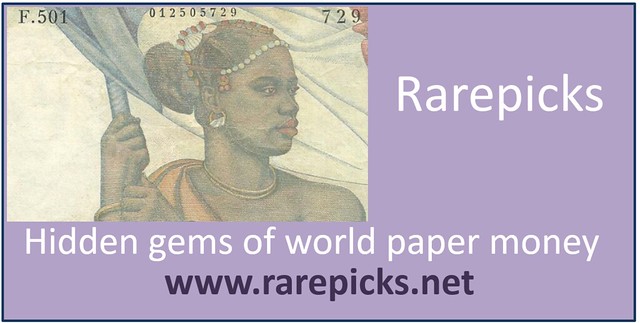
NOTES FROM E-SYLUM READERS: JULY 19, 2020
On the Pennsylvania Railroad Heroic Service Medal
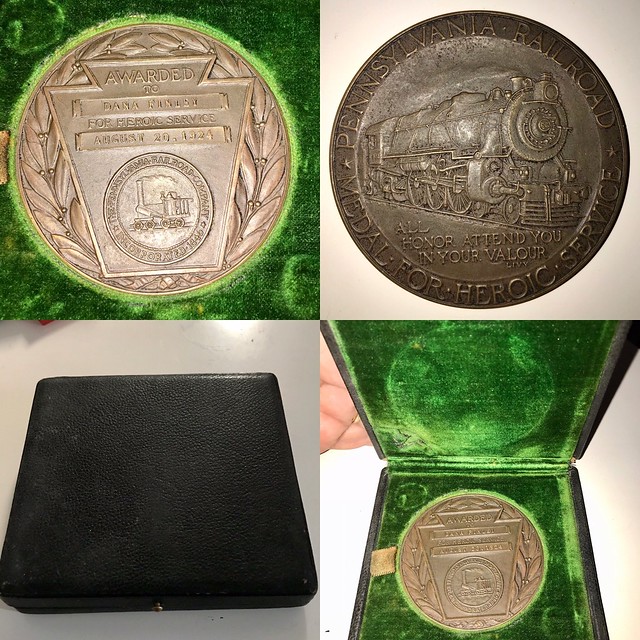
Kristen Reichardt of Hastings-on-Hudson, NY writes:
"I am in possession of one of the hero medals awarded by the Pennsylvania Railroad and was delighted to find your article discussing them.
"My maternal grandfather, Dana G. Finley, was a fireman aboard a tugboat in NY Harbor from approx 1915-1960. According to my mother, he jumped into the harbor to save somebody who had fallen into the water.
"I've always wanted to know more or to find some documentation to back up the family story, so thanks for your article."
You're welcome! Kristen provided the medal images above, and a New York Times article about the rescue. Thanks. Thanks also to contributors George Cuhaj and Harry Waterson for sharing their information on these. -Editor
To read the February 28, 1926 New York Times article (subscription required), see:
24 RAIL EMPLOYES GET VALOR AWARDS
(https://timesmachine.nytimes.com/timesmachine/1926/02/28/100053549.html?pageNumber=80)
To read the earlier E-Sylum article, see:
THE PENNSYLVANIA RAILROAD HEROIC SERVICE MEDAL
(https://www.coinbooks.org/v21/esylum_v21n39a11.html)
Nicholas Rhodes and the Coinage of Tripura Book
Peter Preston-Morley writes:
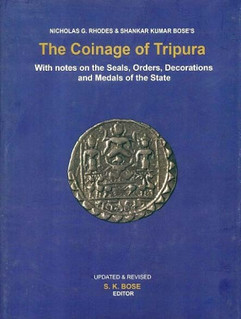 "In your latest E-Sylum you refer to a book on the coinage of Tripura and its 'pointless synopsis'. I should point out (and doubtless others may too) that Nicholas Rhodes died in 2011. He remains much-missed in the world of Indian and Oriental numismatics."
"In your latest E-Sylum you refer to a book on the coinage of Tripura and its 'pointless synopsis'. I should point out (and doubtless others may too) that Nicholas Rhodes died in 2011. He remains much-missed in the world of Indian and Oriental numismatics."
The only information we had on this book came from the seller's marketing material, and the publication date was nowhere to be found. Like the Synopsis, the provided information was of little use. But this is a "Revised and Updated" edition, likely published post the death of Rhodes, perhaps even this year. Can anyone confirm the publication date? -Editor
To read the earlier E-Sylum article, see:
NEW BOOK: THE COINAGE OF TRIPURA
(https://www.coinbooks.org/v23/esylum_v23n28a03.html)
More on the "Release" of the Peratrovich Dollars
Regarding the "release" of the Peratrovich Dollar coins in Alaska,
Dick Hanscom writes:
 "My bank, Mt. McKinley Mutual Savings Bank received an email from the Mint, with a phone number to call. They called and could not buy them at face value. They were instructed to go to the mint website to order them... at the same price as anyone. They purchased 250 for $289.75 plus $4.95 shipping.
"My bank, Mt. McKinley Mutual Savings Bank received an email from the Mint, with a phone number to call. They called and could not buy them at face value. They were instructed to go to the mint website to order them... at the same price as anyone. They purchased 250 for $289.75 plus $4.95 shipping.
"So, how do banks buy them at face value?
"The mint is disregarding the State's request for these to be released to circulation."
Paul Gilkes of Coin World reached out and learned that only orders of 1,000 coins will be accepted at face value. But shipping charges still apply, so banks would still be operating at a loss. -Editor
To read the Coin World article, see:
Banks ordering Alaska dollars from Mint must meet standards
(https://www.coinworld.com/news/us-coins/banks-ordering-alaska-dollars-from-mint-must-meet-standards)
To read the earlier E-Sylum article, see:
NOTES FROM E-SYLUM READERS: JULY 12, 2020 : Peratrovich Dollars Not "Released"
(https://www.coinbooks.org/v23/esylum_v23n28a12.html)
Placebo Translation
Regarding Frank Robinson's search for a translation of the word "placebo" on the Bermanian Tickle-Token touch piece,
Martin Purdy writes:
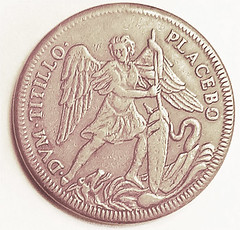 "I guess others will have been in "touch" already about this - either that, or I've missed a gag at Google Translate's expense - but anyway, "placebo" is Latin for "I shall please", which basically tells you the purpose of the tablet of the same name, i.e. it doesn't do you any good but it keeps you happy!"
"I guess others will have been in "touch" already about this - either that, or I've missed a gag at Google Translate's expense - but anyway, "placebo" is Latin for "I shall please", which basically tells you the purpose of the tablet of the same name, i.e. it doesn't do you any good but it keeps you happy!"
Thank you! Makes sense. -Editor
To read the earlier E-Sylum article, see:
BOOK REVIEW: PLEASE IGNORE OUR TIME MACHINE
(https://www.coinbooks.org/v23/esylum_v23n28a07.html)
Allied Military Note
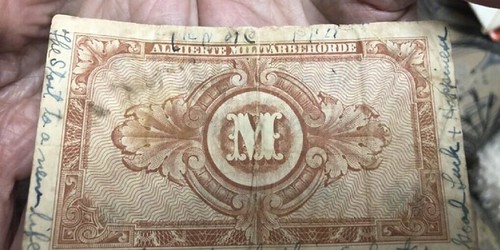
Regarding the Holocaust survivor's banknote discussed last week, Steve Feller writes:
"The note given by the American soldier to the survivor is for sure an Allied Military note used in Germany."
Joe Boling writes:
"Yes, it is the Allied military currency 10-mark note, distinguishable from the back in the absence of any denomination by its dimensions. The lower denominations were almost square, and the higher denominations longer rectangles (about the size and proportions of current US notes). The large M appeared on all of the notes in the series, and apparently represented M-arks. To me it always screams "one thousand.""
Thank you. I found an example of the note for sale on eBay. Here's the image. But I since learned that it's not QUITE what I thought. QUICK QUIZ: what country printed the note I found? -Editor
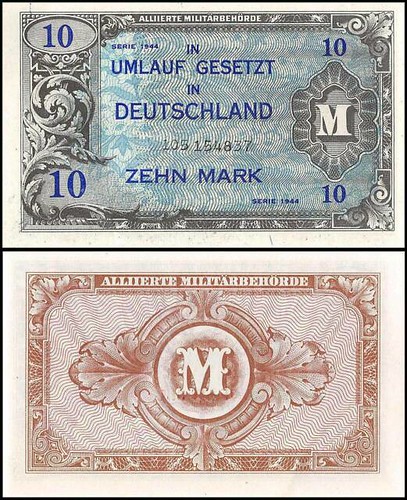
To view the complete lot description, see:
GERMANY 10 MARK 1944 UNC ALLIED OCCUPATION WWII,ALLIED MILITARY CURRENCY 1944 IS
(https://www.ebay.com/i/333522447686)
To read the earlier E-Sylum article, see:
NOTE HELPS AUSCHWITZ SURVIVOR TRACE LIBERATOR
(https://www.coinbooks.org/v23/esylum_v23n28a28.html)
H. W. Gumaer
Ken Bressett writes:
"I am trying to find some information about the numismatic activities of H. W. Gumaer who seemingly was a bookseller in the mid-1930's. Anything the E-sylum readers can supply will be appreciated."
Can anyone help? The Newman Portal has just a few references to Mr. Gumaer of Cortland, NY. -Editor
The Bebee Double-Denomination Note
Doug Pollock writes:
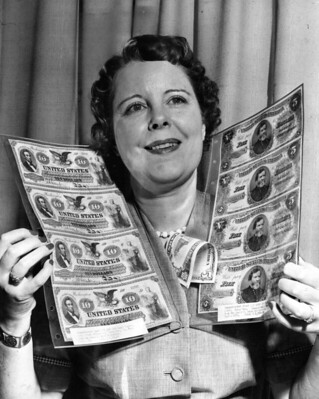 "While researching in the Temple University Digital Library, I came across a 1957 Philadelphia Bulletin photo of Adeline Bebee at the American Numismatic Association convention in the Sheraton Hotel. In the fold of Mrs. Bebee's dress is a double bill printed as a five on one side and a ten on the other. I thought you might be interested in sharing the photo."
"While researching in the Temple University Digital Library, I came across a 1957 Philadelphia Bulletin photo of Adeline Bebee at the American Numismatic Association convention in the Sheraton Hotel. In the fold of Mrs. Bebee's dress is a double bill printed as a five on one side and a ten on the other. I thought you might be interested in sharing the photo."
Thanks! Great photo, and some great notes. The image is being provided courtesy of the Special Collections Research Center, Temple University Libraries, Philadelphia, PA. -Editor
To view the full image and archive record, see:
American Numismatic Association convention at the Sheraton Hotel
(https://digital.library.temple.edu/digital/collection/p15037coll3/id/56080/rec/3)
A. M. Smith's "A History of Colonial Coins"
Dave Hirt writes:
In the post about numismatic author A. M. Smith, one of the titles listed was "A History of Colonial Coins". I have most of Smith's works in my library, but was unfamiliar with that one. I checked my library list, and do not have it. I then went to the Charles Davis book, American Numismatic Literature. It is not listed there. So, is this a title that we did not know before?"
I was also perplexed about that reference, but didn't have time to research it. Is anyone familiar with this title? I wonder if it's an article or monograph. I reached out to Jeremy Bostwick at Stack's Bowers, and the list of titles came from a descendant of A.M. Smith. -Editor
To read the earlier E-Sylum article, see:
COINS PEDIGREED TO NUMISMATIC AUTHOR A. M. SMITH
(https://www.coinbooks.org/v23/esylum_v23n28a20.html)
Numismatic Inventory Template
Jack Topping of JET Numismatics writes:
 "I created a free, printable inventory template sheet for numismatists to use in their collections. I know a lot of people are split between online software or a regular piece of graph paper to take inventory of their collection, so I tried making one of my own for everyone to use that isn't too bland but at the end of the day is still a printable sheet.
"I created a free, printable inventory template sheet for numismatists to use in their collections. I know a lot of people are split between online software or a regular piece of graph paper to take inventory of their collection, so I tried making one of my own for everyone to use that isn't too bland but at the end of the day is still a printable sheet.
I made a separate page for it on my site instead of just a blog post; for anyone interested, it's here:
www.jetnumismatics.com/inventory
."
Have a look and try it out if it meets your needs. -Editor

STANDARD COIN CARD MYSTERY
Researcher and author David Lange made an interesting discovery recently. "Standard Coin Card 206" is shown at right below. -Editor
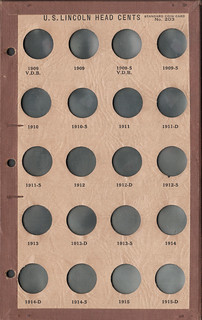 It's pretty rare that I find something new to me in the area of coin albums, but a new entry did pop up. An eBay seller had several coin album pages that feature the color scheme and materials of the National Coin Album brand, but there is nothing in the Wayte Raymond literature to indicate he produced them.
It's pretty rare that I find something new to me in the area of coin albums, but a new entry did pop up. An eBay seller had several coin album pages that feature the color scheme and materials of the National Coin Album brand, but there is nothing in the Wayte Raymond literature to indicate he produced them.
There are four different pages that together hold a set of Lincoln Cents 1909-37. These are titled in very small letters STANDARD COIN CARD 203 through 206. A fifth page was also listed that was similar in construction but without printed dates or a number. Some user had neatly lettered it to continue the series up to 1944.
The pages are the size of the small National pages but in portrait format, rather than the usual landscape format. Each one is three-hole punched at left to fit into a binder, but no such binder was included by the seller. The pages do, however, fit Raymond's binder for a product he marketed as the National Coin Album for Young Collectors. This is listed and illustrated in my book on Beistle, Raymond and Meghrig albums. Raymond's portrait format album was issued in 1936, with dates ending that year or 1935. It's likely that the mystery holders date from roughly the same period, since the printed dates end at 1937. The pages in Raymond's binders warped badly, so it's possible that the Standard Coin Cards were replacements for the original-issue pages and came out a year or two later. I've seen no mention of this in any Raymond literature, nor have I any non-Raymond ads for such a product.
I've included photos of both the Young Collector album and one of the mystery pages in the hope that some reader has more information.
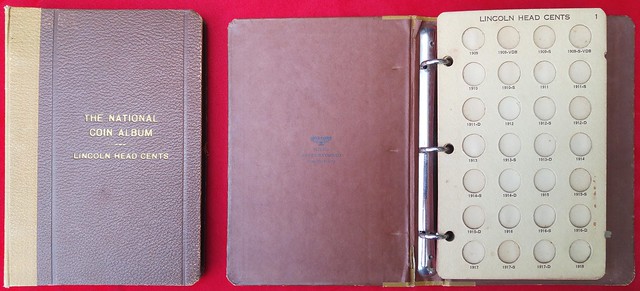
National Album for Young Collectors
Interesting. Can anyone help? -Editor
VOCABULARY TERM: EDGE
Dick Johnson submitted this entry from his Encyclopedia of Coin and Medal Terminology. Thanks! I added a couple images. -Editor
Edge. The outer circumference or plane of a numismatic or medallic item formed by the thickness of the piece. Edges are not to be confused with border or rims, which are parts of the obverse and reverse planes; but edges extend from the termination of the border or rim on one side to the termination on the opposite side of the piece, from one rim/edge juncture to the other.
The shape of the edge adds to its artistic effect. Basically there are seven shapes:
1) Squared edge: has sharp, angular corners.
2) Rounded edge: has no corners, but forms a smooth half circle.
3) Beveled edge: has one side's diameter greater than the other causing a slanting or oblique edge.
4) Double beveled edge: has two beveled edges coming together and forming a sharp point at the center of the edge.
5) Concave edge: semi-circular cavity around entire circumference.
6) Contorniate edge: one or more furrows in the edge.
7) Cannelured edge: a depressed panel or groove with ornamentation or lettering, as engrailment, created by the canneluring machine.
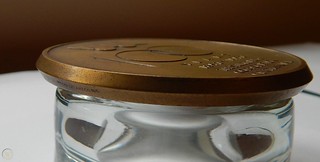
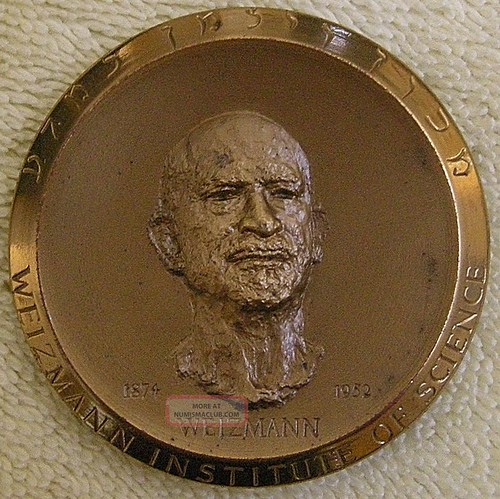
LEFT: Studebaker Centennial Medal
RIGHT: Weisman Institute of Science Medal
An example of the double beveled edge is the Studebaker Centennial Medal of 1952 (52-6); an example of a concave edge is the 4-inch Woolworth 150th Anniversary Medal of 1929 by Whitehead & Hoag (J&J 25:8); and an example of contorniate edge is the Weisman Institute of Science Medal, 1959.
Some edges were hand filed to make round or fit a prescribed diameter, as to fit a mounting, a bezel or an album porthole. At the Paris Mint in 1640s hand-filed edges are in evidence (as Louis XIII and Richelieu Medal, 1641, J&J 20:382). A form of adjusting or preforming blanks before striking has occurred as well.
Edges are humorously (but accurately) referred to as the "third side" of a numismatic or medallic item and are the location of reeding, or a variety of lettering, figures, symbols, ornamentation, engrailment or hallmarking. Reeding was originally invented to prevent clipping of coins, then other forms of ornaments were applied to the edges of coins, notably engrailment and lettering. Lettering and numbering are widely applied to medallic items. See edge lettering and numbering.
Looking for the meaning of a numismatic word, or the description of a term? Try the Newman Numismatic Portal's Numismatic Dictionary at: https://nnp.wustl.edu/library/dictionary
Or if you would like a printed copy of the complete Encyclopedia, it is available. There are 1,854 terms, on 678 pages, in The Encyclopedia of Coin and Medal Technology. Even running two a week would require more than 19 years to publish them all. If you would like an advance draft of this vital reference work it may be obtained from the author for your check of $50 sent postpaid. Dick Johnson, 139 Thompson Drive, Torrington, CT 06790.

WAITE B. LEWIS (1871-1936)
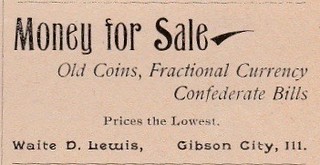 Waite B. Lewis (1871-1936), was born in Pleasant Township, Fulton, Illinois, on September 19, 1871, the son of a farmer and native of New York, Rosseel Lewis (1841-1915), and Lucinda Elizabeth Sargent Lewis (1839-1915). The family lived on their farm in Mount Pleasant, Whiteside, Illinois. He was educated at the Cottonwood Grove School, Bond County, Illinois. On June 12, 1890, he married Mattie Irene Hollinshead (1870-1947), daughter of Canadian born Joshua Hollinshead, and his wife Mehitable May Appleby Hollinshead, at the bride's family's home in Ustick.
Waite B. Lewis (1871-1936), was born in Pleasant Township, Fulton, Illinois, on September 19, 1871, the son of a farmer and native of New York, Rosseel Lewis (1841-1915), and Lucinda Elizabeth Sargent Lewis (1839-1915). The family lived on their farm in Mount Pleasant, Whiteside, Illinois. He was educated at the Cottonwood Grove School, Bond County, Illinois. On June 12, 1890, he married Mattie Irene Hollinshead (1870-1947), daughter of Canadian born Joshua Hollinshead, and his wife Mehitable May Appleby Hollinshead, at the bride's family's home in Ustick.
He worked for thirty years in the union stock yards in Chicago as a cattle salesman. In March 1898, the Daily Register Gazette, reported he had nine loads of hogs shipped to Morrison. He seems to have had a livestock sales office in Gibson City, Fords County, Illinois, and in 1898, worked part-time as a coin dealer.
In 1900, he was a farmer in Mount Pleasant, Illinois with his wife and son Ward P. Lewis.
On May 5, 1901 he purchased farm land at an auction sale from the Wisconsin Land Company and Clover Land Company.
In 1920, he is listed at the firm of Riordon, Martin & Co., grain commission, Chicago, Illinois, where he probably worked supplying feed to livestock farmers.
In 1930, he is recorded as living on his farm at 87 Ridge Road, Jackson Township, Will County, Illinois.
He died on December 6, 1936 at his home in Manhattan Township, Will County, Illinois. He is buried in the Grove Hill Cemetery.
To read the complete article, see:
LEWIS, WAITE B
(http://www.numismaticmall.com/numismaticmall-com/lewis-waite-d)
HARVEY STACK'S NUMISMATIC FAMILY, PART 74
The latest article in Harvey Stack's blog series continues the discussion of auction sales of 1978. Thanks, Harvey. -Editor
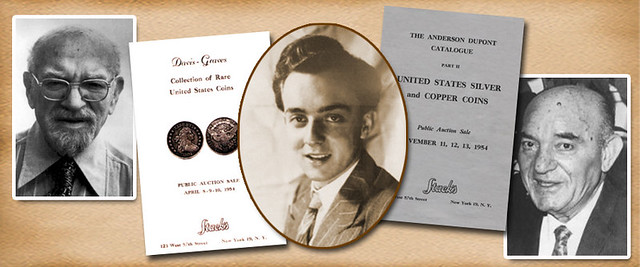
Along with the firm's retail business, Stack's public auction program continued to grow. Our sales included collections built by long established clients who had passed away, as well as others who came to Stack's when they were ready to sell, recognizing our long-term success in the field.
In 1978 we conducted nine different public auctions, as well as several mail bid only sales held through our associate firm Coin Galleries. In addition to a greater number of sales, the auctions also grew in the number of lots they contained compared to earlier years. These offered a great variety of material in all grades and gave most collectors the opportunity during the year to add to their collections.
In February we offered an old timer's collection – the Goshen Collection of U.S. and Foreign Gold, Silver and Copper Coins, consisting of over 1,600 lots. Highlights included Proof coins of 1857, 1858 and 1873, plus numerous other rare and choice U.S. coins. The World portion of the sale had a wonderful type offering of coins of the 20th century. In March, Stack's offered the Fraser Collection of U.S. Gold, Silver and Copper Coins, 1,120 lots featuring a comprehensive selection of each series. Our Spring Sale in April was another general offering of United States coins, 930 lots that attracted many buyers.
In May, Stack's produced two auction catalogs. The first was the fabulous Frederick S. Knobloch Collection of Ancient Roman Coins, offering 766 lots. It was one of the most extensive collections of Roman coinage offered at public auction in decades, and the catalog became a reference text for collectors. Fred had spent many days and weeks for many years cataloging collections that were consigned to Stack's and he was one my best teachers for the series. Collectors from around the world attended this important event. Also in May, at the Greater New York Convention, we had an outstanding, quality offering of a comprehensive collection of U.S. Gold, Silver and Copper Coins, 941 lots, which helped bring to the convention a record crowd of collectors.
In June, we were honored to be able to present the renowned Lighthouse Collection, over 1,000 lots that featured some of the choicest and rarest coins offered in decades. The owner, who had enjoyed attending Stack's sales for several decades, designated the money from the sale as a special donation to the wonderful charity that she supported, the Lighthouse. Every dollar realized was given to this group dedicated to help those who were blind. This collection included an extensive offering of Pioneer and Territorial gold coins, that had eight $50 gold slugs, plus many coins from California, Utah and Colorado. There was a wonderful quality collection of $1 through $20 gold coins, with Proofs and choice Mint State examples. It was an honor to serve our special client and the charity she supported.
In September 1978 we offered our Autumn Sale of just over 1,000 lots. It was a general collection of U.S. gold, silver and copper coins. In October we presented the Charles Collection, 1,304 lots of choice and rare United States type coins, early Proof sets, and an exciting group of United States pattern coins. Once again, it was a sale tailored for a wide range of collectors as it included finest known coins, choice rarities, and also circulated examples for those who were not seeking only the higher grades.
Our last sale of 1978, in December, was an offering from the collection of Harold S. Bareford. I will talk about Mr. Bareford and his collection in my next article.?
To read the complete article, see:
Harvey Stack Remembers: Growing up in a Numismatic Family, Part 74
(https://www.stacksbowers.com/News/Pages/Blogs.aspx?ArticleID=Harvey-Stack-Remembers-Part74)
To read the earlier E-Sylum article, see:
HARVEY STACK'S NUMISMATIC FAMILY, PART 73
(https://www.coinbooks.org/v23/esylum_v23n27a20.html)
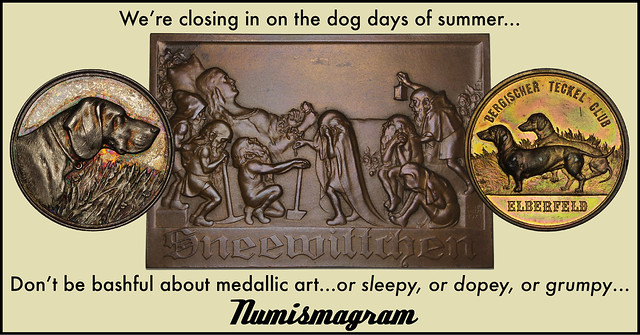
SOFAER COLLECTION OF PALESTINE COINS AND TOKENS
A great collection of Palestine coins and tokens will be sold by Goldberg Auctions in September. Here's the announcement. -Editor
in September 13-16 Goldberg Sale
Auctioneer Ira Goldberg says that "Palestine coins are hot, and so, the appearance of high quality Mint State Palestine Mandate coins from the Abraham Sofaer Collection, in our September 13-16, 2020 Goldberg Auction, should attract serious interest from collectors in the United States and abroad."
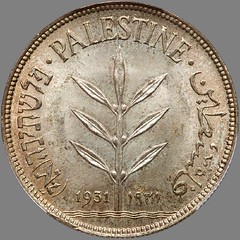
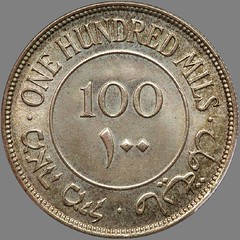
1931 Palestine 100 Mils
Several of the Palestine Mandate coins are among the finest known, like: (1) 50 Mils, 1931; second lowest mintage in the series – only 500,000; awesome coin with satiny surfaces covered by dazzling gold and peacock-green iridescence; PCGS graded MS-65, Pop 2/0, none graded finer by PCGS; estimated at $5000 up; and (2) 100 Mils, 1931; satiny white, near-gem surfaces, with attractive golden patina around devices and inscriptions; PCGS graded MS-64, Pop 1/0, the single finest example of this low mintage (250,000) from either PCGS or NGC; estimated at $5000 up.
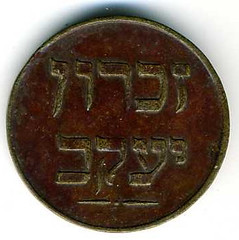
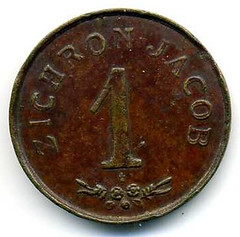
In addition to the coins, the Sofaer Collection is rich in rarely seen tokens issued by Jewish, Christian and Muslim groups before the establishment of the State of Israel. Highlights of the Jewish tokens are (1) a complete set of tokens issued by Zichron Ya'akov (agricultural settlement founded in 1882 by 100 Jewish pioneers from Romania) plus an extra 1/2 , struck in Paris in 1885, and later withdrawn from circulation as illegal tender; Sylvia Haffner indicates that "[these] tokens are very rare;" the "1" is a glossy brown AU, while the others are VF-EF; estimated at $1500 up; and (2) a complete set of 12 Café Werner (Haifa) tokens used from 1935-1951; includes denominations of 5, 10, 20, 30, 40 and 50 in bronze (first series) and copper-nickel (second series); it is believed that the waiters used these tokens for calculations, and at times of the shortage of coins these were used as currency; it is thought that only 51-58 complete sets are extant; grades vary from Fine to Extremely Fine, with no problems; estimated at $500 up.
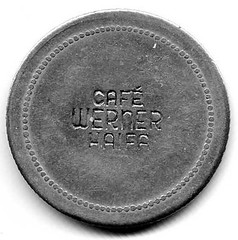
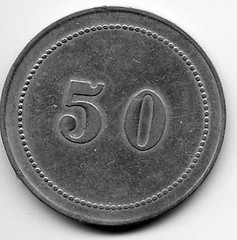
Complete sets of the first, second and third issue Templar Tokens are featured in the Sofaer lots. These scarce pieces average VF-EF, and the lots carry estimates of $300-$500. The Templars were German Protestants who broke away from their church and moved to the Holy Land, settling in Haifa, Jaffa and Jerusalem where they established their own farms, schools, etc. To cope with the shortage of small change, the "Centralcasse," the main financial institution of the Templars, issued tokens which circulated from around 1880 to 1917.
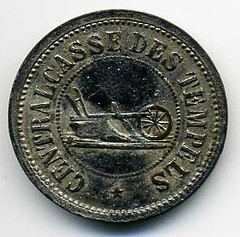
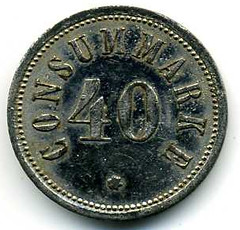
A lot consisting of 19th -20th century Arabic pieces includes an EF 1840 Acre Citadel 30mm bronze medal; AU Arabic Women's Committee, 27mm silver medal (pictured), given by Arabic Ladies Council in the Old City of Jerusalem in 1938 to people donating money for orphans; Fine 1839 32mm Egyptian silver? talisman with loop, picturing the Sphinx on both sides; etc.; estimated at $250-300.


All in all, the Goldberg Sale of Abe Sofaer's coins and tokens will include over three dozen high quality Palestine Mandate coins, all in PCGS "Sofaer Collection" specially labeled holders, and 18 lots of rarely seen material, including Chevra Kadisha "Tzedakah" tokens, "meant for carriers of coffins or given to beggars in the Mount of Olives Cemetery in the 1890s;" an "extraordinary group" of Ottoman Empire coins counterstamped in Sfat for use as charity tokens, before 1917 (one is pictured); and a partial set of rare Jerusalem Hotel Tokens, c. 1880's, which were authorized by the Turkish authorities after money was deposited with them to back up the tokens.
One important lot, estimated at $2,000 up, includes virtually complete sets of Palestine (avg. VF –EF) and Israel (avg. Unc.) trade coins in albums, containing rarities, such as 1948 25 Mils with Open Link and 1948 25 Mils Uniface. Sylvia Haffner relates how "Some sources state that [the uniface 25 Mils strikes] were struck through an error when the guards had removed one die during lunch time and failed to replace it when production started up again." Another lot includes six False Shekels, produced over the last few centuries. Interested collectors will be able to view and bid on all of the coins and tokens in the Sofaer Collection at www.goldbergcoins.com. To order a printed catalog for only $10, call Ira Goldberg at 800-978-2646 and indicate that you read about it in The E-Sylum.
For more information, see:
https://www.goldbergcoins.com/
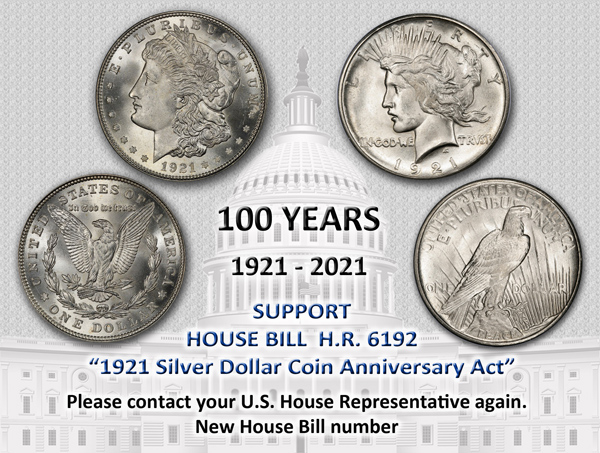
NUMISMATIC NUGGETS: JULY 19, 2020
Here's a selection of interesting or unusual items I came across in the marketplace this week. Tell us what you think of some of these. -Editor
Armand Caque Benjamin Franklin Medal
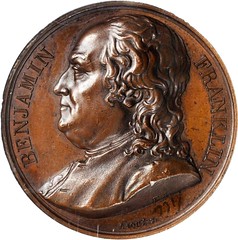
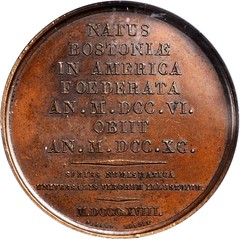
"1818" (ca. 1830) Benjamin Franklin Series Numismatica Medal. By Armand Caque. Greenslet GM-42, Fuld FR.M.SE.1. Bronze. Plain Edge. MS-62 BN (NGC).
41 mm.
Bold, high relief design. Great portrait! From the Stack's Bowers August 2020 Auction. -Editor
To read the complete lot description, see:
"1818" (ca. 1830) Benjamin Franklin Series Numismatica Medal. By Armand Caque. Greenslet GM-42, Fuld FR.M.SE.1. Bronze. Plain Edge. MS-6...
(https://auctions.stacksbowers.com/lots/view/3-NM413/1818-ca-1830-benjamin-franklin-series-numismatica-medal-by-armand-caque-greenslet-gm-42-fuld-frmse1-bronze-plain-edge-ms-6)
1842/0-MA Central American Republic 8 Reales
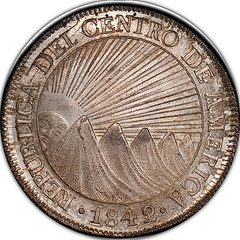
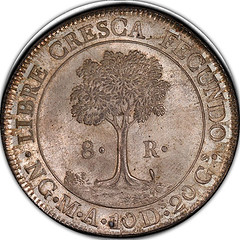
Type: Central American Republic
Date: 1842/0-MA 8 Reales
Service: PCGS
Grade: MS65+
Description:
This is far and away the finest known example of this rare overdate issue and quite possibly for the type. The finest on the NGC pop report is a sole MS63 and PCGS has seen no other uncirculated specimens of this date. Superb luster and strike.
Great coin! From the stock of Northeast Numismatics. -Editor
To read the complete lot description, see:
1842/0-MA Central American Republic 8 Reales PCGS MS65+
(https://www.northeastcoin.com/servlet/v?itemKey=zi29_1000240438)
Kentucky Civil War Sutler Token
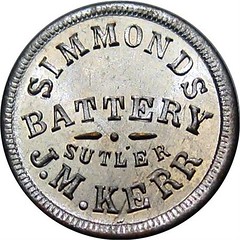
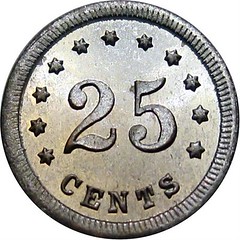
Civil War Sutler token Schenkman KY 1-25Z (formerly NL M-25I) R9 NGC MS67 with 80% Bright mint luster an impressive token. Simmonds Battery Sutler J. M. Kerr 25 Cents struck in Tin Plate. From the Steve Tanenbaum, David Schenkman and George Fuld collections April 1991.
Found in the offerings of Steve Hayden. -Editor
To read the complete lot description, see:
KY-1-25Z Simmonds Battery 1st Kentucky Civil War Sutler Token NGC MS67 R9
(https://www.civilwartokens.com/Listing/Details/2942772/KY125Z-Simmonds-Battery-1st-Kentucky-Civil-War-Sutler-Token-NGC-MS67-R9)
1866 Shield Nickel Pattern J-489
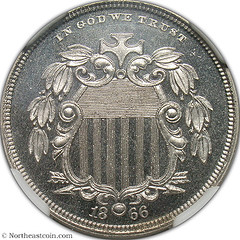
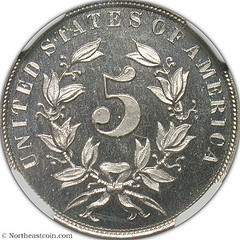
Type: Pattern
Date: 1866 5 Cent Judd-489
Service: NGC
Grade: PF66UCAM
Description:
R-L6. Very cool looking pattern! The date is split and the reverse design is very different than the one chosen for production. The only UCAM/DCAM at either service.
I immediately fell in love with Shield Nickel patterns after reading a COINage article about them as a wee numismatist. Great style! This is another item from the stock of Northeast Numismatics. -Editor
To read the complete item description, see:
1866 Shield Nickel Pattern J-489 NGC PF66 UCAM
(https://www.northeastcoin.com/servlet/v?itemKey=zi27_1000240444)
1906 Gold Carnegie Hero Fund Medal
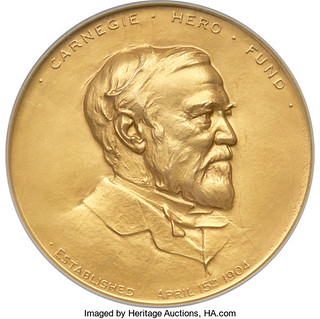
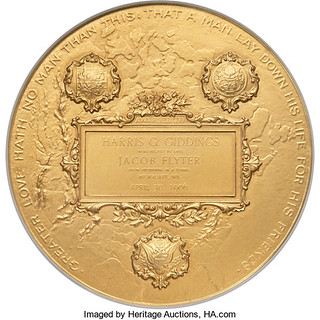
1906 MEDAL Carnegie Hero Fund Gold Medal, Harris G. Giddings, MS67 NGC. 280.04 grams. The Carnegie Hero Fund awarded bronze (awarded today), silver (awarded from 1904 to 1979), and gold medals (awarded from 1904 to 1923) for lifesaving efforts over many decades. According to the fund's website, Carnegiehero.org, Carnegie heroes are those who enter into mortal danger to rescue others. The medal is described as "the highest honor for civilian heroism in the U.S. and Canada." Andrew Carnegie (1835-1919), the famous 19th and early 20th century industrialist and philanthropist, established the fund in 1904. All awardees are identified at the website, including Harris Giddings, the hero of this gold medal:
"Harris G. Giddings, 45, captain of city fireboat, helped to save Jacob Flyter, 30, from drowning, Milwaukee, Wisconsin, April 30, 1906. Giddings and two other men descended a 55-foot shaft and rescued Flyter, who was imprisoned in an air-chamber of a tunnel under the Milwaukee River, into which water was leaking."
I have a small collection of bronze Carnegie Hero medals. The silver ones are rare and the gold rarer still. This example is offered in the Heritage August 2020 sales. -Editor
To read the complete lot description, see:
1906 MEDAL Carnegie Hero Fund Gold Medal, Harris G. Giddings, MS67 NGC....
(https://coins.ha.com/itm/20th-century-tokens-and-medals/tokens-and-medals/1906-medal-carnegie-hero-fund-gold-medal-harris-g-giddings-ms67-ngc/a/1318-4141.s)
Royal Mint Elton John Coin
Elton John 2020 UK One Ounce Silver Proof Coin
Limited Edition 7,500
The edge lettering reads ★ ELTON JOHN ★
The only coloured coin in the range and the only one to feature edge lettering
A Limited Edition Presentation of 7,500
Features a coin design approved by Elton John
Struck in 999 fine silver and finished to Proof standard
£95.00
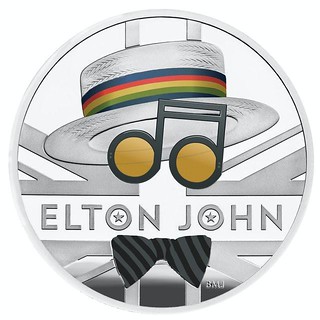 Denomination £2
Denomination £2
Maximum Coin Mintage 10000
Alloy 999 Fine Silver
Weight 31.21 g
Diameter 38.61mm
Reverse Designer Bradley Morgan Johnson
Obverse Designer Jody Clark
Edge Inscription ELTON JOHN
Quality Proof
Year 2020
The coin design honouring this music legend was created by Bradley Morgan Johnson. With any number of famous looks from which to draw inspiration, Bradley chose to depict the performer wearing his famous music-note glasses and straw boater's hat
This colorized silver proof highlights a delightful "invisible man" design. Gotta love it. -Editor
To read the complete item description, see:
Elton John 2020 UK One Ounce Silver Proof Coin
(https://www.royalmint.com/our-coins/events/music-legends/elton-john/elton-john-2020-uk-one-ounce-silver-proof-coin/)
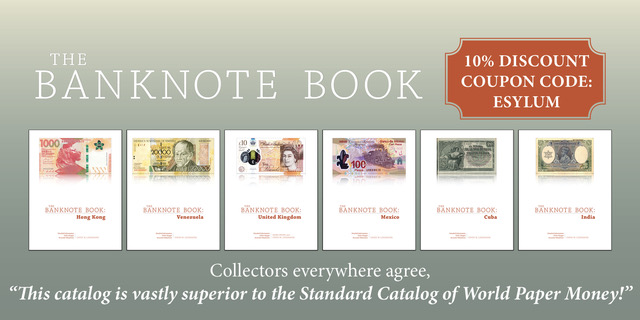
THE BYZANTINE ANONYMOUS FOLLIS
Mike Markowitz published another article in his Ancient Coin Series for CoinWeek; this one is on the Byzantine Anonymous Follis. Here's an excerpt - see the complete article online. -Editor
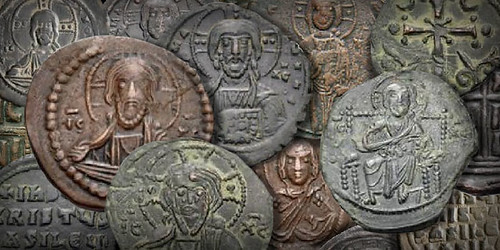
IN THE ANCIENT WORLD, gold and silver were the coinage of the elite, but humble copper was the coinage of the common folk.
For over 120 years, the single denomination of copper coinage issued by the Eastern Roman ("Byzantine") Empire was "Anonymous". The Anonymous follis did not bear the name or portrait of the ruler but instead bore an image of Jesus and a religious motto. Fifteen different types are known, though only about six are common, with affordable and collectible examples. These coins are often carelessly overstruck, and generations of painstaking research by numismatists have made it possible to reconstruct the sequence of this fascinating series.
Class A1 Anonymous Follis
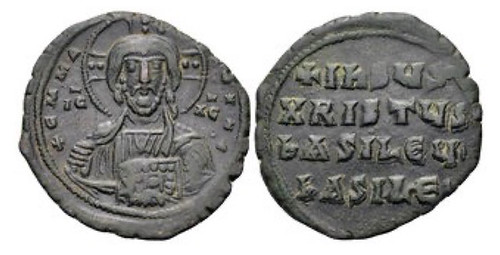
Anonymous Ӕ. Constantinople, time of John I, 969-76 CE. + EMMANOVHΛ, facing bust of Christ Pantokrator; IC-XC across fields/ + IҺSЧS XRISTЧS ЬASILЄЧ ЬASILЄ, in four lines. Class A1, Sear 1793. 8.96g, 28mm, 6h. Roma Numismatics Ltd E-Sale 39 26 August 2017. Lot: 929. Realized: 260 GBP (approx. 335 USD).
Born about 925 CE, John Tzimiskes was a handsome aristocrat who rose to command the Byzantine army in Armenia at the age of 25. Empress Theophano fell in love with John and helped him murder his uncle, the emperor Nikeforos Phokas, in bed on the night of December 10-11, 969.
Perhaps in remorse, John became intensely devout, and his coinage reflects this. The copper follis, weighing seven to nine grams, typically purchased a loaf of bread. John's "Class A1" follis bears the image of Christ Pantokrator ("ruler of all things"), His head surrounded by a halo containing a cross.
To read the complete article, see:
The Byzantine Anonymous Follis – CoinWeek Ancient Coin Series
(https://coinweek.com/coins/coin-profiles/ancient-coins-coin-profiles/the-byzantine-anonymous-follis-coinweek-ancient-coin-series/)

JEFF BURKE'S NEW 1909 V.D.B. LINCOLN CENT
Jeff Burke submitted these notes on his acquisition of a beautiful 1909 V.D.B. Lincoln cent. Thanks! -Editor

As a young boy in the early 1970s, I kept my coin collection in an antique green trunk at our home in Hastings, Nebraska. This treasure chest was always at the foot of my bed in a basement bedroom that I shared with my brother Tom. On special occasions like Christmas, I would haul the trunk upstairs to the study room (shown in the photo) to examine my coins within eyeshot of the brightly decorated Christmas tree in our living room. To learn more about coins, I read the old newspaper-style Coin World on a regular basis. One of my trunk treasures was a 1909-S V.D.B. Lincoln cent in EF. I purchased this coin for $175.00 from a company in California after seeing an ad in Coin World. I earned every penny of the $175.00 sweating over a push lawn mower in neighborhood yards.
On a personal note, the 1909 V.D.B. Lincoln cent reminded me of our family trip to the East Coast during the summer of 1969 or 1970. Our itinerary included inside tours of the Philadelphia Mint as well as the White House. Despite having to wait in line for several hours at the latter's East Wing entrance, we finally had a magnificent guided walk through the presidential home! It was also quite a thrill to tour our nation's first mint. I recall that we stayed with my mother's Uncle Ed and Aunt Peg Waltemath and my cousins, who lived in the Philadelphia area. They took us to see the giant King of Prussia Mall near Philadelphia. Of course I found a few coins to purchase at a coin store in this behemoth!
At some point during my junior high school years, I decided to trade or sell my coin collection, including my coveted 1909-S V.D.B. and a 1937-D three-legged variety American Bison nickel, also in EF. My new collecting goal: a basic U.S. type set of coins. Eventually, this type set grew to forty pieces. They ranged from an 1828 13-Stars half cent in AU to a 1976 Proof Bicentennial Eisenhower dollar and varied in grade from VF to UNC with a few proof specimens, as well. I spent three years assembling the set, carefully placing each piece in a Whitman blue U.S. type coin folder.
Life moved on. Alas, I had to sell my precious U.S. type set to help pay for college. I spent several years overseas teaching in Cairo, eventually completed a Ph.D. at McGill University in Montreal, had two wonderful children (one born in Montreal and the other in Salem, Virginia) and finally landed in Virginia where I worked as a college professor. My second wife, Beth, and I lived with Beth's mother Carol, in rural Bedford County with a scenic view of the Blue Ridge Mountains from our front porch. The three of us had many travel adventures together! Sadly, Carol passed away from cancer while in hospice care in our home in 2009.
A few years before she passed, Carol gifted me with some family inheritance money. After deliberating what to do with this generous gift, I decided to take up the hobby of coin collecting once again. I still remember the butterflies in my stomach and sheer excitement when I saw the UPS driver meander down our driveway on a Saturday morning. He was delivering the 1909-S V.D.B. that I had purchased from Heritage Auctions. I was so excited to own another 1909-S V.D.B. PCGS MS 63 RB, some thirty-five years after my first one! It had original luster with beautiful toning. Eventually, I developed a passion for early American coppers, and traded this piece to embark on my new collecting journey. That old green trunk was opening once again, thanks to Carol!
A former collecting focus of mine was assembling a small collection of key or semi-key date coins in my favorite series: Lincoln cents, Buffalo nickels, Mercury dimes, Walking Liberty half dollars, Morgan dollars, and Saint-Gaudens double eagles. Indian Head cents are included in the mix as well – I still own my prized 1877 Indian Head Cent PCGS EF 45, purchased from Steve Estes Rare Coins in 2006. Now I find joy in searching for high-grade, well-struck and inexpensive type coins in these series to add to my collection.
To prepare for my latest Lincoln cent acquisition, I reread sections of The Complete Guide to Lincoln Cents, David W. Lange, 2005; A Guide Book of Lincoln Cents, Q. David Bowers, 2008; The Secret History of the First U.S. Mint, Joel J. Orosz and Leonard D. Augsburger, 2011; The Investor's Guide to United States Coins, Neil S. Berman and Silvano DiGenova, 2007; and the History of the United States Mint and Its Coinage, also by David Lange, 2005.
Initially, I considered targeting the 1916-P for my hunt. The Lincoln cent featured "new obverse master hubs" at the Philadelphia Mint that year, producing stellar specimens (see Lange, Lincoln Cents, p. 38). However, I returned to a sentimental favorite – the 1909 V.D.B. This was the first year of mintage for Lincoln cents and I am fond of the V.D.B. letters on the bottom of the reverse. For me, finding V.D.B. on a Lincoln cent reverse is like Charlie discovering the golden ticket to Willy Wonka's chocolate factory!
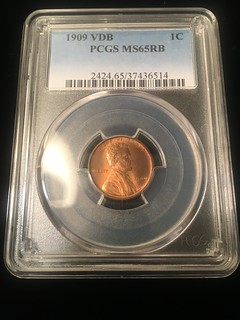 I prefer toned Lincoln cents with original surfaces. I studied at least eighty to ninety specimens
online before making my choice. So many examples had mushy or even ghost V.D.B. letters.
Super shiny dipped specimens did not beckon to me. I finally selected a 1909 V.D.B. PCGS MS
65 RB that I found on The Reeded Edge eBay store.
I prefer toned Lincoln cents with original surfaces. I studied at least eighty to ninety specimens
online before making my choice. So many examples had mushy or even ghost V.D.B. letters.
Super shiny dipped specimens did not beckon to me. I finally selected a 1909 V.D.B. PCGS MS
65 RB that I found on The Reeded Edge eBay store.
This historic coin arrived in the mail yesterday. What a golden beauty! I love the overall color and toning as well as the distinctive V.D.B. letters on the reverse!
Beth bought this coin for me as a gift for my 62nd birthday. Some five decades into collecting, I am no longer kneeling for hours on the floor to study the contents of that long-gone trunk. But I continue to delight in my ever-changing collection of numismatic treasures.
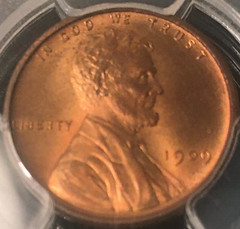
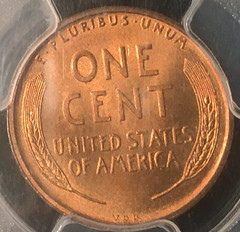
A great coin! Congratulations on your acquisition! -Editor

1910 EXPERIMENTAL FINISH DOUBLE EAGLE
This article comes from the July 14, 2020 Coin News email from Heritage Auctions. -Editor
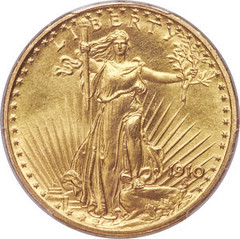
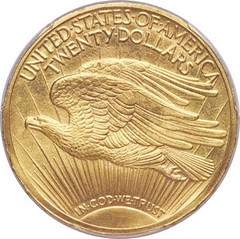
The United States Mint struggled to find a popular finish for gold proof coins throughout the early 20th century Renaissance of American coinage that Roger W. Burdette has so thoroughly chronicled in his popular writings. Various types of sandblast and satin finishes were adopted at different times, and even more experimental finishes were briefly tinkered with, but none were found that addressed both the technical needs of the coiners and the aesthetic sensibilities of the collectors. Many issues with experimental finishes have vanished without a trace, as the Mint did not carefully document all their endeavors in this regard, as long as the bullion accounts balanced. Experimental pieces that were not adopted for coinage were usually melted for recoinage and forgotten. Fortunately, some extremely rare experimental pieces have survived to give us a glimpse of this colorful, "behind the scenes" era in Mint history.
The coin offered in our August 3-9 Signature auction is an exciting new find with a unique experimental finish, an example of an attractive coinage that was not adopted, leaving us with this single amazing example of "what might have been." Heritage Auctions is privileged to present this PCGS SP66+ 1910 Saint-Gaudens double eagle, with its unique experimental finish, in this important offering.
Although Augustus Saint-Gaudens' iconic design for the double eagle has often been called America's most beautiful coinage design, the new motifs posed many technical problems for the U.S. Mint's coiners. Even after the high relief of the initial design was lowered to allow high-speed production of business-strike coins, the basined fields and sculptural relief of the devices made it impossible to polish the dies to achieve the brilliant finish collectors prized on proof issues. Accordingly, the Mint switched to a dull matte, or sandblast, finish for proof coins in 1908, similar to that used on many medals of the period. Unfortunately, contemporary collectors failed to appreciate the artistic qualities of the matte format and sales of proof sets declined dramatically.
To address this customer dissatisfaction, the Mint switched finishes again in 1909, to the Roman, or satin, finish for gold proofs. In his Saint-Gaudens Double Eagles as Illustrated by the Phillip H. Morse and Steven Duckor Collections, Roger W. Burdette explains the satin finish proofs were simply carefully selected planchets struck with high pressure on the medal press to fully bring up the design and carefully handled to preserve surface quality. The only difference between the two finishes was the matte proofs were sandblasted after striking and the satin proofs were not. The satin proofs are brighter than the matte proofs and usually have a lighter color.
Experimentation with the matte finish continued in 1909, as well, as illustrated by the matte proof Indian half eagle that surfaced in lot 1004 of the Gaston DiBello Collection.
The 1909 Indian eagle in lot 1177 of the DiBello catalog was also a matte proof experimental piece. Unfortunately, collectors still preferred the old brilliant proofs of earlier years, and sales of proof sets continued to languish. With no good alternatives to fix the problem, the Mint continued to use the satin finish on gold proofs in 1910.
Influential gold collector (and future Secretary of the Treasury) William H. Woodin was particularly unhappy with the satin proofs. Woodin went on to specifically request having two 1910 gold proof sets made up, using the matte finish, which he would purchase for his collection. He continued to lobby for a return to the matte finish in an August 19, 1910-dated letter to Assistant Secretary of the Treasury A. Piatt Andrew saying, "The present proofs [1909, 1910] of the St. Gaudens and Pratt designs are simply rotten." Andrew replied that he could not use Mint resources to produce "particular issues" for "particular people", but he agreed to return to the sandblast finish for proofs in 1911 if a consensus of American coin collectors favored that. Accordingly, Woodin posed the question to attendees of the 1910 ANA Convention, displaying a 1908 sandblast proof set next to a 1909 set with a satin finish and asking the members to vote on which was better. The members ruled in favor of the sandblast finish and a resolution was forwarded to Andrew, who ordered a return to the matte finish for proofs, effective the following year.
Although Andrew refused to produce sandblast proofs as delicacies for favored collectors in 1910, the Mint apparently experimented extensively with different proof finishes that year for their own purposes. At least one gold proof set with a matte finish has been certified by NGC, exactly the kind of set Woodin requested. The set surfaced in North Carolina in 2005 and the coins were offered individually by Heritage Auctions in 2007. This set might have been produced late in the year, as a trial run for producing sandblast proofs in 1911.
The present coin represents an entirely different direction in the search for a popular finish for gold proof coins. The surfaces of this coin are lighter and more reflective than the satin finish proofs, and much brighter than their matte proof contemporaries. John Dannreuther notes the surfaces are:
"Full of die polish. My guess is that they maybe were trying to polish the dies and see if they could make a brilliant proof. Just a guess, as the 1910 ANA held that survey and the Sandblast Proofs won the vote over the Satin Proofs! PCGS felt it was different enough to warrant a separate number, as it is not a grainy Satin Proof nor one of the reticulated surfaces Satin Proofs. We don't have records of their experiments in a lot of cases, of which this is one, in my opinion (and that of PCGS). It came in after I finished my book or I would have noted it, of course."
Perhaps the experimental issue this coin most closely resembles is the PR67 NGC 1907 Rolled Edge Indian eagle offered in lot 5238 of the FUN Signature (Heritage, 1/2011), which realized $2,185,000. That coin originally belonged to Mint Director Frank Leach and many collectors believe it was a trial piece. The present coin exhibits bright, virtually flawless orange-gold surfaces with brilliant satiny luster, much like Leach's satin proof Rolled Edge ten in the FUN auction. The surfaces of both coins show heavy die polish lines on both sides, a distinguishing feature that separates them from their satin proof counterparts. This Plus-graded Premium Gem Special Strike displays razor-sharp definition on the design elements, with individually countable columns in the Capitol and intricate detail in Liberty's facial features and the eagle's feathers. Only the slightest hint of softness is evident on the four stars below the Capitol. A partial wire edge is visible on both sides of the coin and the inner rim is sharply delineated, with marked concavity in the fields as they fall gracefully away from the rims. The overall presentation is simply stunning.
This incredible unique coin possesses an aura of mystery all its own to go with its unparalleled absolute rarity, high technical quality, and terrific eye appeal. We believe it is one of the most important recent discoveries in 20th century American numismatics.
1919 NEW YORK ASSAY OFFICE SILVER INGOT
A recent update to Ken Conaway's Silver Ingots site highlights the 1919 United States Assay Office New York ingot; the 1920 ingot was already part of the collection. -Editor
 The 1919 United States Assay Office New York silver ingot No. 4186, 6.27 ozs & Melt No. 7 is one of the most noteworthy, early United States Government silver ingots known to exist. By far, this ingot has the most distinguished provenance of any United States Government silver ingot in existence. The first owner on record of this ingot was Dan Brown of Dan Brown's Coin Shop in Denver, CO. Clarence Criswell acquired it from Dan Brown in the early 1970's, and held it in his United States Government silver ingot collection until it was sold at the 1984 American Numismatic Association Convention Auction by Kurt R. Kruger in Detroit, MI July 28 - 30, 1984.
The 1919 United States Assay Office New York silver ingot No. 4186, 6.27 ozs & Melt No. 7 is one of the most noteworthy, early United States Government silver ingots known to exist. By far, this ingot has the most distinguished provenance of any United States Government silver ingot in existence. The first owner on record of this ingot was Dan Brown of Dan Brown's Coin Shop in Denver, CO. Clarence Criswell acquired it from Dan Brown in the early 1970's, and held it in his United States Government silver ingot collection until it was sold at the 1984 American Numismatic Association Convention Auction by Kurt R. Kruger in Detroit, MI July 28 - 30, 1984.
Thanks to Bryce Brown's Auction Catalogs, I have been able to acquire an original American Numismatic Association Convention Auction catalog as well as an original Settlement Price Sheet from the Detroit 1984 ANA auction, adding to the provenance of this ingot.
 The hallmark placement, rotation and strike, as well as all other markings, including the weight, serial and lot numbers are superb. The weight of 6.27 ozs is on the right side facing.
The hallmark placement, rotation and strike, as well as all other markings, including the weight, serial and lot numbers are superb. The weight of 6.27 ozs is on the right side facing.
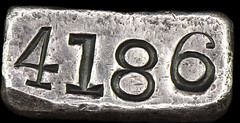 ?The ingot serial number 4186 is on the leading edge facing, the melt number 7 is on the top edge facing and the reverse is blank.
?The ingot serial number 4186 is on the leading edge facing, the melt number 7 is on the top edge facing and the reverse is blank.
To read the complete article, see:
New York - The 1919 Ingot
(https://www.silveringots.com/new-york/the-1919-ingot)
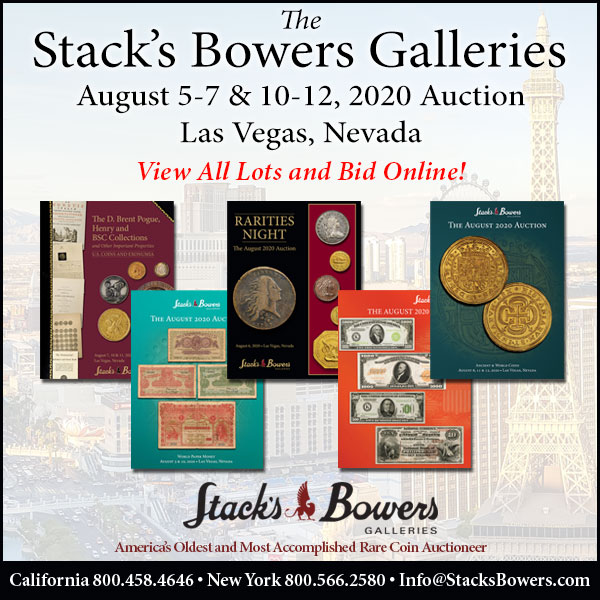
THE CASE OF THE BOGUS BURNING BILL
Here's an interesting legal case from the files of the Richmond Register. -Editor
He liked to place a bet now and then and he liked to drink a little here and there -- which got him into a lot of trouble.
He went to the race track one day and placed several bets judiciously, won a lot of money and ended up before a judge. On the way home from the track, he decided to stop at a local gin mill to celebrate his good fortune and, after hoisting too many, was arrested. Not for being a ruckus but for passing counterfeit money.
It seemed that during his celebration, Harry flamboyantly took a $5 bill of out his wallet, placed a match to it and along with several other boozers, watched it burn to a crisp. Whereupon, the bartender examined what was left of the fiver and deciding it was funny money, had Harry hauled off to jail on charges of making money without earning it.
"I'm innocent," Harry insisted when brought before the judge. "I didn't know the $5 bill was bogus."
"A likely story," responded the prosecuting attorney. "The only person who would set fire to a $5 bill, obviously, is someone who knows its counterfeit and not worth the paper it is printed on."
IF YOU WERE THE JUDGE ...
Would you convict Harry of passing counterfeit money?
THIS IS HOW THE JUDGE RULED ...
NO!
The judge held that burning the $5 bill was insufficient evidence to infer that Harry had known the $5 bill was counterfeit. While it is most unusual to burn a $5 bill, noted the judge, it was more reasonable to believe that Harry destroyed the bogus bill because of his drunken state rather than because he thought it was worthless.
Based on a 1949 United States Court of Appeals decision.
To read the complete article, see:
The case of the bogus burning bill
(https://www.richmondregister.com/opinion/columns/the-case-of-the-bogus-burning-bill/article_48bdc635-85cb-54bd-9789-22c87163c004.html)
LOUIS COLAVECCHIO, MASTER COUNTERFEITER
The New York Times published an obituary of counterfeiter Louis Colavecchio -Editor
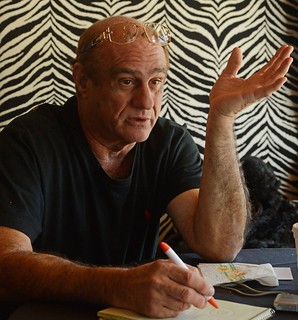 In 1996, just after he was arrested by Secret Service agents and New Jersey gaming troopers at Caesars Palace in Atlantic City, Louis Colavecchio laughed.
In 1996, just after he was arrested by Secret Service agents and New Jersey gaming troopers at Caesars Palace in Atlantic City, Louis Colavecchio laughed.
His red Honda, loaded up with nearly 800 pounds of high-quality counterfeit slot machine tokens, had easily made its way into the casino's parking garage because of modifications to its trunk. But a New Jersey trooper's Buick cruiser, now hauling the bogus tokens in its trunk, was not so lucky.
Sagging under the weight of the coins, the rear of the police car dropped when it hit a speed bump, and its muffler and tailpipe were knocked off. As he recalled in his memoir, "You Thought It Was More: Adventures of the World's Greatest Counterfeiter" (2015), Mr. Colavecchio, riding in the back seat, chuckled at the trooper's misfortune.
For Mr. Colavecchio, a craftsman and former jewelry maker, there was nothing more thrilling than creating counterfeit slot machine coins. The coins he made were so detailed that even federal officials and casino workers found it challenging to distinguish his fakes from legitimate ones under a microscope.
Casino officials were often too embarrassed to admit that they had been swindled by Mr. Colavecchio, said Franz Douskey, his friend and the other co-author of his memoir. He was barred from every casino in the country, The Associated Press reported. Nonetheless, he had disguises that he used to outwit pursuers.
Though available court records give an incomplete picture, they show that over the decades Mr. Colavecchio faced a series of charges, including bank, mortgage and insurance fraud. But counterfeiting was his calling card.
In 1997, he was sentenced to 27 months in prison for his phony casino coins. In 2019, he was sentenced to 15 months, this time for producing thousands of counterfeit $100 bills.
"They call it a correctional institute, but they didn't correct him," Mr. Douskey said in a phone interview.
All of Mr. Colavecchio's work was meticulous. He could toil alone under microscopes for days, filled by a desire to trick the federal government and the casinos. He would not brook the possibility of an error; each die had to be perfect.
"Making counterfeit items must have appealed to me in some way that I didn't understand," Mr. Colavecchio wrote in his book.
Mr. Colavecchio perfected his illicit craft over about four years, Mr. Longo said, making thousands of chips and slot tokens for 36 casinos. At one point, the Treasury Department even sought his expertise. According to court records, the department paid him $18,000 after he was released from federal prison in 2000 because his manufacturing dies had outlasted those of the U.S. Mint.
His tokens were masterly because he crushed the originals and got the exact breakdown of their composition, Mr. Longo said. Mr. Colavecchio purchased the material, bought a press and, using a laser-cutting die, made molds and copies.
"It's like having access to the U.S. Mint on the weekend, printing your money and leaving," Mr. Longo said.
To read the complete article, see:
Louis Colavecchio, Master Counterfeiter, Is Dead at 78
(https://www.nytimes.com/2020/07/13/us/louis-colavecchio-dead.html)
To read earlier E-Sylum articles, see:
COUNTERFEIT KING'S COIN PRESS TO BE AUCTIONED
(https://www.coinbooks.org/esylum_v11n38a27.html)
COUNTERFEIT KING'S HISTORY CHANNEL SEGMENT
(https://www.coinbooks.org/esylum_v11n39a15.html)
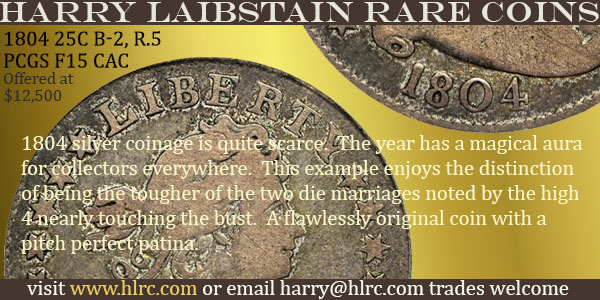
OFFSET PRINTING ERRORS
With permission we're publishing this excerpt from an article on offset printing errors by Ben Simpson in the July/August issue of ErrorScope, the publication of the Combined Organizations of Numismatic Error Collectors of America (CONECA). Thanks to editor Allan Anderson for providing the text and images. -Editor
Paper Money Errors: The Offset Printing
By Benjamin C. Simpson, YN
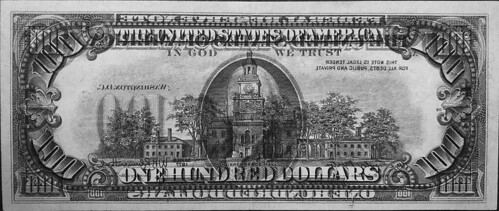
Few paper money mistakes are more captivating than the offset. It is easy to understand why this error type is so popular; their impressive appearance and affordability make them a perfect entry point for currency collectors.
Offset printings are roughly analogous to clashed dies for coins. When the impression cylinder is mistakenly rolled over a wet printing plate without a sheet of notes intervening, the ink design on the plate is transferred to the impression cylinder itself. This blunder causes the subsequent sheets of notes to be printed with its usual design on one face (transferred from the plate) and a mirror image of that design on the other face (erroneously transferred from the impression cylinder). A reflection has been produced on the opposite side of the note. On all small-size U.S. currency, there are multiple printing stages. Offset errors most commonly occur in the first printing, when most major design elements are produced.
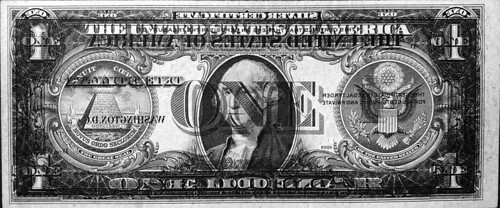
Each time the impression cylinder encounters a wet printing plate, 10-12 error sheets are created. Offsets will rapidly decrease in boldness after the first sheet is printed. Collectors pay heavy premiums for offsets from the first or second sheets, due to their clarity and eye-appeal. Here is an exceptionally vivid face-to-back 1935E $1 silver certificate, whose offset printing is as bold as the face printing. Offset errors on U.S. Silver Certificate notes are rare.
For more information about the Combined Organizations of Numismatic Error Collectors of America, see:
https://conecaonline.org/

MORE ON THE 2020 TENINO WOODEN SCRIP
Here's an excerpt from another article on Tenino's wooden COVID-19 relief scrip from the Thompson Reuters Foundation, published July 18, 2020 by The Dispatch. -Editor
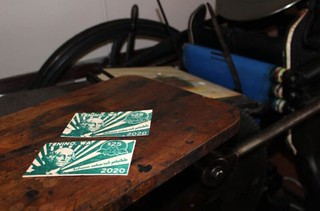 Tucked away under lock and key in a former railroad depot turned small-town museum in the U.S. state of Washington, a wooden printing press cranked back to life to mint currency after nearly 90 dormant years.
Tucked away under lock and key in a former railroad depot turned small-town museum in the U.S. state of Washington, a wooden printing press cranked back to life to mint currency after nearly 90 dormant years.
The end product: $25 wooden bills bearing the town's name – Tenino – with the words "COVID Relief" superimposed on the image of a bat and the Latin phrase "Habemus autem sub potestate" (We have it under control) printed in cursive.
With the coronavirus pandemic plunging the United States into a recession, decimating small businesses and causing job losses across the country, some local governments are looking for innovative ways to help residents weather the storm.
Businesses up and down the town's quaint Main Street accept the wooden note for everything except alcohol, tobacco, cannabis and lottery tickets.
Tenino's city government backs the local currency, which merchants can exchange for U.S. dollars at city hall at a 1:1 rate.
Susan Witt, executive director of the Schumacher Center for a New Economics, a Massachusetts-based think tank, said alternative currencies like Tenino's banknote are better than direct cash payments at boosting local economies.
"The City of Barcelona gave donations (in 2017/18) to sports teams and cultural groups as well as social programs (then) watched these donations go to big box stores," she said in emailed comments.
"So, it created a local currency so that these 'discretionary' funds in its budget would circle back to support locally-owned businesses."
Mayor Fournier noted that, for long-time Tenino residents, the wooden notes are nothing new.
Fournier views the project as the kind of initiative towns and small cities must take upon themselves to survive the coronavirus outbreak amid what he views as an inadequate federal response.
He pointed out that the federal Paycheck Protection Program (PPP), a fund of forgivable loans designed to keep businesses afloat through the pandemic, is not scaled for the businesses in Tenino that have just a handful of employees.
"A federal program dumps money from the top and these blue-chip companies steal it all," Fournier said. "If we do it from the ground up, there's no stealing. It's a direct ballast to Main Street."
Fournier said he has already fielded queries from towns across the country looking to emulate Tenino's effort.
"What if 5,000 other small cities did that same thing and took it upon themselves to put $10,000 into Main Street?" he asked.
"That's $50 million directly into small businesses. It totally hacks the system."
So far, however, Tenino's currency does not appear to be circulating much among local businesses.
At the grocery and hardware store that anchors Main Street, manager Chris Hamilton said that by mid-June customers had spent $150 in the local bills to buy necessities like groceries and a new faucet to replace a broken tap.
"I'll redeem it for cash at city hall," he said. "I hadn't thought about recirculating it."
Next door at Don Juan's Mexican Kitchen, owner Juan Martinez Jr. has four of the wooden $25 notes sitting in his cash register.
In a case of history repeating, he said coin collectors have offered to buy the bills from him for double their value in U.S. dollars.
Back in the 1930s, coin collectors fueled a speculative rise in the value of the town's wooden scrip, according to Washington state online encyclopedia HistoryLink.
To read the complete article, see:
Money talks: U.S. town prints own currency to boost coronavirus relief
(https://www.thedispatch.in/money-talks-u-s-town-prints-own-currency-to-boost-coronavirus-relief/)

CBS TENINO WOODEN MONEY SEGMENT
Bob Fritsch writes:
"This CBS Sunday Morning report on Tenino's wooden money was on TV this morning. Thanks to Terri Ventresca of The Elongated Collectors for the tipoff."
Thanks. It's nicely done. Here's an excerpt from the text; see the link below to watch the segment. -Editor
Like a lot of small towns, Tenino, Washington, was hit hard economically by the COVID shutdown. Residents like Laurie Mahlenbrei, an out-of-work schoolbus driver, have been struggling. "It's been really difficult," she said. "I mean, I've been washing windows, scrubbing floors, cutting down trees, mowing lawns, whatever I can for a buck."
But there's something unusual going on in this town of 1,800 people. The city government of Tenino is doing what it can to help folks like Mahlenbrei, not with a check, or even a debit card, but with – believe it or not – a pile of wood.
"Every once in a while I run into a cashier that hasn't taken it before," said Mahlenbrei. "But it's just a blast, you know? I mean, I'm paying for food with something historical, you know?"
And it's not the first time. In fact, the city issued its first wooden currency way back in 1931, during the Great Depression.
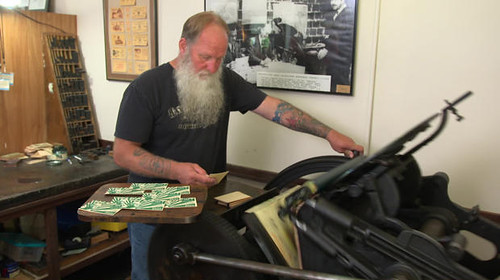
Tenino's COVID-era wood currency is printed on the same machine, an 1890 Chandler & Price platen press.
Loren Ackerman, the president of the Tenino Depot Museum, is the only person in town who knows how to operate the 19th century machine that printed Tenino's Depression-Era currency. "You're literally printing money," said correspondent Luke Burbank.
On wood!
The wood money has drawn attention from all over the world. But lest anyone chalk it up as just a joke or a publicity stunt, it's been much more than that to people like Laurie Mahlenbrei.
"It's been a godsend, you know?" she said. "I mean, I could buy things that I couldn't buy because, like I said, I was scrapping for any kind of work I could get. I was barely being able to buy food."
When Burbank caught up with her, Mahlenbrei was buying groceries with her wooden money. But she could have also paid her water bill with it, got her prescriptions filled at Hedden's, the town drug store, or even had a tasty meal at Don Juan's Mexican Kitchen.
To read the complete article, see:
Hard currency: One Washington city prints its own money on wood
(https://www.cbsnews.com/news/hard-currency-one-washington-city-prints-its-own-money-on-wood/)

OMAN'S NEW 50 RIAL BANKNOTE
The Bank of Oman announced a new 50 rial banknote. Found via News & Notes from the Society of Paper Money Collectors (Volume VI, Number 4, July 14, 2020). -Editor
The Central Bank of Oman announced today that it will issue this month a new banknote of 50 rials of the Sixth Series (OMR50.5) to commemorate the 50th Anniversary of the rise of the Modern Omani Renaissance, and in memory of its founder, the late His Majesty Sultan Qaboos bin Said bin Taymur.
The Central Bank will complete the Sixth Series in the last quarter of the year with the release of the following denominations:
100 baisa (OMR0.100.5), ½ rial (OMRo.500.5), 1 rial (OMR1.7), 5 rials (OMR5.7), 10 rials (OMR10.7) and 20 rials (OMR20.6).
The new note measures 173 x 76 mm, is dated 1441 A.H. – 2020 C.E.,and depicts the portrait of the late Sultan Qaboos bin Said, who reigned from 1970 to 2020, and the façade of the Central Bank of Oman building.
In the back it shows the buildings of the Council of Oman, the Supreme Court and the Ministry of Finance.
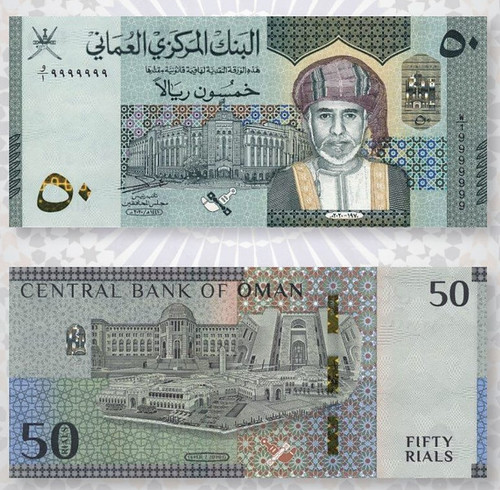
To read the complete article, see:
Oman New Commemorative Banknote, Sixth family of notes announced/
(https://mriguide.com/oman-new-commemorative-banknote-sixth-family-of-notes-announced/)

LOOSE CHANGE: JULY 19, 2020
Here are some additional items in the media this week that may be of interest. -Editor
Hoax 'Devil Coin' Offered
Jeff Starck of Coin World published a piece about the "satanic coin" tied to a famous hoax in Denmark. -Editor

A "satanic coin" tied to a famous hoax in Denmark is coming to auction.
Anholt is a tiny island in the North Sea between Jutland and Sweden, but its infamous numismatic output is one for the ages.
Bruun Rasmussen's Aug. 2 auction includes one of the copper pieces from a curious episode of history.
The pieces are evidence of a multinational prank orchestrated by a mild-mannered Danish art gallery clerk.
To read the complete article, see:
Coin from Denmark satanic hoax headed for August auction
(https://www.coinworld.com/news/world-coins/coin-from-denmark-satanic-hoax-headed-for-august-auction)
To read the earlier E-Sylum article, see:
HOAX 'DEVIL COINS' FOUND AT BATH ABBEY
(https://www.coinbooks.org/v21/esylum_v21n26a35.html)
The Latin Monetary Union
This article on the history of the Latin Monetary Union doesn't discuss coins or paper money, but it's a nice overview, and in an interesting aside reveals who collects REALLY BIG COINS (OK, manhole covers). Found via News & Notes from the Society of Paper Money Collectors (Volume VI, Number 4, July 14, 2020). -Editor
An economist from the Anglosphere is likely to tell you that the euro is structurally flawed and must implode. An economist in one of the 19 eurozone countries would say it is a work in progress and will survive. As the euro is the most widely used currency in foreign-exchange markets and central bank reserves after the US dollar, an implosion would have devastating effects within and outside the EU and thus on all of our finances.
Geeks are often derided for their arcane interests – Jeremy Corbyn collected manhole covers – but obscure hobbies can be useful. For money and history geeks like me there are clear lessons from the last European common-currency experiment. Now all-but forgotten, it lasted 61 years (the euro is in its 21st year), from 1866 to 1927, though in reality it was effective for a much shorter period. This was the Latin Monetary Union (LMU).
In the mid-19th century most leading currencies were metal-based; gold and silver coins were widespread, with lower-denomination coins containing cheaper metal compounds. Paper money and letters of credit were also widely used. But this paper was usually backed and redeemable into gold on demand. That is why British banknotes are still printed with the outrageous lie to "promise to pay the bearer" (the equivalent value in gold). This convertibility was in fact wound down "temporarily" between 1914 and 1931, when it was abolished.
To read the complete article, see:
What the Latin Monetary Union – Europe's forgotten currency – can teach us about the euro
(https://moneyweek.com/currencies/601626/what-the-latin-monetary-union-europes-forgotten-currency-can-teach-us-about-the)
Chinese Corporate Chopmarks
Collectors know about Chinese chopmarks, those stamps made by merchants to certify coins or banknotes that pass their way. These still appear today on many circulating U.S. banknotes. This Wall Street Journal article discusses how chops are still an intricate part of Chinese corporate culture. -Editor
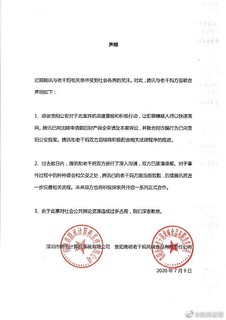 In recent months, executives at some of China's most powerful companies have brawled, sued and launched furtive missions to seize control of one of their most valuable assets.
In recent months, executives at some of China's most powerful companies have brawled, sued and launched furtive missions to seize control of one of their most valuable assets.
They are rubber stamps.
Also known as corporate chops, the seals themselves cost about $20 each. But under Chinese law, physical possession of the red-ink-stained chop can determine who controls a corporation and the fate of billions of dollars.
For as long as anyone can remember, companies in China have used corporate chops to certify legal documents, authenticate financial statements and sign contracts. Agreements that only carry signatures but no crimson corporate imprint are not legally binding in China.
Though China has leapfrogged much of the Western world in cashless transactions, 5G wireless technology and facial recognition, but companies here have remained stubbornly wedded to the millennia-old chop.
To read the complete article (subscription required), see:
The Real Power Brokers In China: Those Who Wield the Rubber Stamps
(https://www.wsj.com/articles/the-real-power-brokers-in-china-those-who-wield-the-rubber-stamps-chops-tencent-dangdang-11594670212)
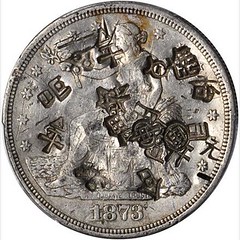
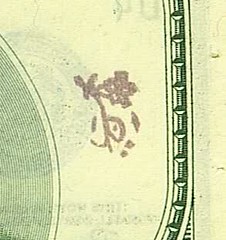
To read earlier E-Sylum articles, see:
STACKS BOWERS OFFERS CHOPMARKED TRADE DOLLARS
(https://www.coinbooks.org/v20/esylum_v20n13a31.html)
CHOPMARKS ON MODERN U.S. PAPER MONEY
(https://www.coinbooks.org/esylum_v17n07a21.html)

SHORTAGE LEADS BANKS TO PAY PREMIUM FOR CHANGE
It was bound to happen sooner or later. Some banks are now paying a premium for small change amid the coronavirus coin shortage. -Editor
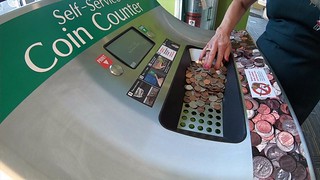 Do you have a jar of coins in your house? Maybe you have been saving for a special occasion? Well, a local bank says they will pay you for what's inside that jar — plus interest!
Do you have a jar of coins in your house? Maybe you have been saving for a special occasion? Well, a local bank says they will pay you for what's inside that jar — plus interest!
"It has never happened before, it's something new, and it's interesting…I really didn't expect coin shortage to be something we have to deal with," said Neil Buchanan of Community State Bank.
A literal coin shortage has made it nearly impossible for some local businesses to deal with the hard currency.
"So what do we do, and we kicked around ideas, and said, 'You know what, we're buying it off the Fed. We might as well just pay our local people instead and kind of cut out the middle man sort of, " Buchanan said.
In layman's terms, Community State Bank is willing to pay you for the bag of coins you forgot about on the shelf – and they will pay interest too!
"We're not going to charge you. In a matter of fact, we're going to give you more for your coin," Buchanan said. "It's $5 for every $100 worth of coin brought in. So, for example, my parents brought in $218 in coin and they got $228 dollars back."
This coin campaign started a little more than a week ago — and the coins are rolling in.
Bank executives say they cannot say with certainty when this campaign will end.
To read the complete article, see:
Coin shortage prompts bank to pay you for spare change: 'It has never happened before'
(https://fox6now.com/2020/07/16/coin-shortage-prompts-bank-to-pay-you-for-spare-change-it-has-never-happened-before/)
To read earlier E-Sylum articles, see:
THE COVID-19 COIN SHORTAGE
(https://www.coinbooks.org/v23/esylum_v23n25a11.html)
MORE ON THE COVID-19 COIN SHORTAGE
(https://www.coinbooks.org/v23/esylum_v23n28a14.html)


